I have always been a fan of all things esoteric, the unique, and perhaps even the underdog. Engineering oddities fascinated me from a young age; if it was different or somewhat outlandish, I was hooked. For that reason, it’s probably no surprise to many people that the aircraft I adore more than all others (yes, even more than Concorde) is the Lockheed L-1011 TriStar.
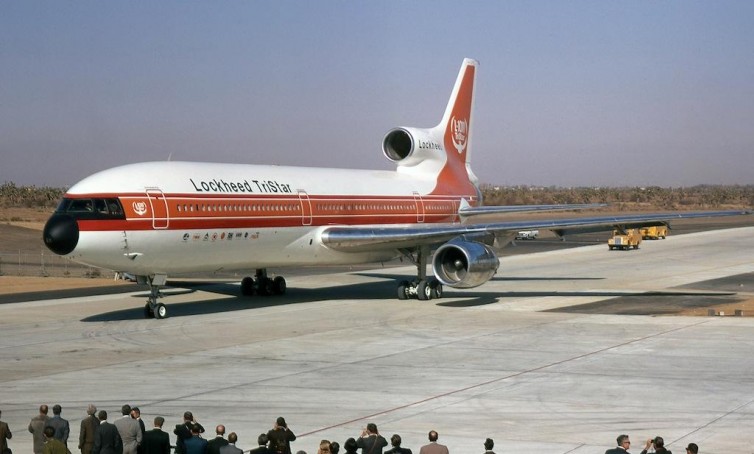
The L-1011 prototype after completing her first flight on November 16, 1970 – Photo: Jon Proctor
However, I can take things a step further, because for me, this is more than an aircraft; it represents the engineering prowess of hundreds of engineers ’“ one of whom I happened to know very well. A man who was lucky enough to spend a lifetime in aviation working for some of the most storied aeronautical firms in history, such as Avro Canada (later Hawker Siddeley), Convair, De Havilland Canada, and Lockheed. Prior to his death in 2013, this engineer described the L-1011 as his ’œmagnum opus’, his greatest achievement as an engineer and the work that he was most proud of.
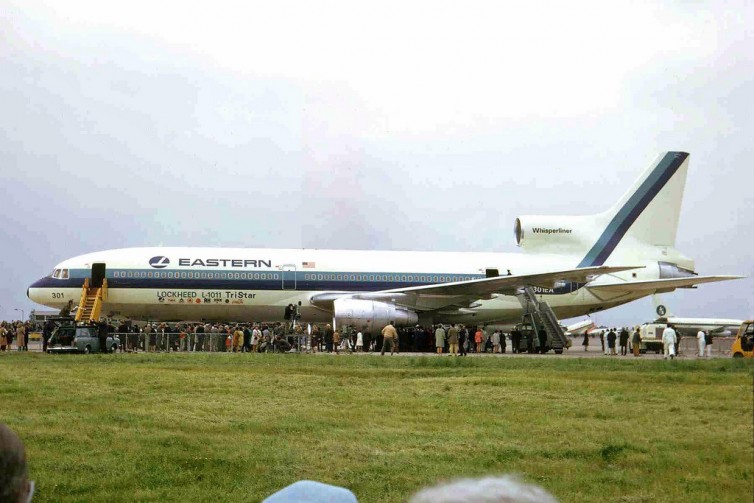
A Lockheed Tristar prototype, in Eastern Air Lines livery, visits East Midlands (EMA) for a presentation to Rolls Royce staff – Photo: Ken Fielding
(Clicking Play on the media file above will play the L-1011 theme song that Lockheed commissioned to advertise the TriStar to potential airline customers)
While much has been written about the failures of the L-1011 to gain a foothold in the commercial market, I have always found the battle between Lockheed and McDonnell Douglas to be a fascinating business case, a prime example of market saturation and what ultimately lead to the undoing of both companies commercially. However, it is also interesting to look at how two companies approached an identical brief from one visionary American Airlines executive. Before we take a look at the TriStar in detail, it is perhaps worth a brief history lesson.
The late 1960s was a time in which just about anything seemed possible. The stars ’“ man was moving ever closer, using his knowledge to realize dreams that had been held for centuries. The technology of the space age was being utilized to help improve mobility on Earth. One approach to meeting the needs of a more mobile society was that taken by Lockheed ’“ the result was quite simply the most advanced first generation wide-body aircraft ’“ a new stage in intercity and intercontinental transportation was born.
In the late 1960s, passenger traffic in North America was growing at an astronomical rate ’“ in order to cope, Boeing had launched the 747, a plane designed largely for Pan Am and sized for their projected passenger growth figures in the upcoming decade. While very few airlines had both the passenger numbers and long-range routes to support the massive aircraft, no airline could afford not to be seen with 747s.
However, it was Frank Kolk, American Airlines vice president of engineering, who clearly saw that the 747 was far too large for American, yet the benefits of a wide-body aircraft powered by highly efficient, high-bypass turbofans was a tantalizing prospect. Despite envisioning the aircraft as a wide-body, twin-engine aircraft, the engine technology of the time as well, as the FAA’s 60 minute rule, mandated a three-engine layout. There were two major responses to Kolk’s brief, from Lockheed and Douglas. Despite having considerable experience with piston engine aircraft, Lockheed had been absent from the commercial market since the L-188 Electra debacle (customer confidence is often lacking when your aircraft mysteriously come apart in midair). Douglas had the DC-8, which was beginning to get rather long in the tooth, and the Super 60 Series orders were drying up.
Having lost the US Air Force’s contract for a strategic air lifter to Lockheed, Douglas had a surplus of engineering talent and a serious cash deficit ’“ the McDonnell Douglas merger was about a year away. The DC-10 would be the first major project to develop from the newly merged company. Unfortunately, McDonnell had no experience in selling commercial aircraft ’“ this was a huge issue ’“ and previous Douglas products were developed with Douglas family money; when cost overruns occurred, they were either paid out of company funds, or in cases such as the DC-8, Donald Douglas himself would cover the costs.
McDonnell felt that the DC-10 needed to be built to a very firm budget, and cost overruns were unacceptable – even at the expense of safety. When this is taken into account, one begins to understand how the groundwork for incidents due to design defects with the DC-10 was laid even before the first metal was cut for the aircraft. A classic example known to most is the cargo door debacle that led to the famous “Applegate Memorandum“…but that is another story for another time.
The L-1011 and DC-10 followed the same basic brief, but the engineering methods for each aircraft were extremely different. McDonnell Douglas tended to be more conservative in its approach to building its first wide-body aircraft ’“ in many ways, the DC-10 was simply DC-8 technology that was enlarged and modernized in certain respects. Lockheed, on the other hand, felt that the key to success in the market was to take the most advanced technology of the day and when that technology was lacking, Lockheed created it.
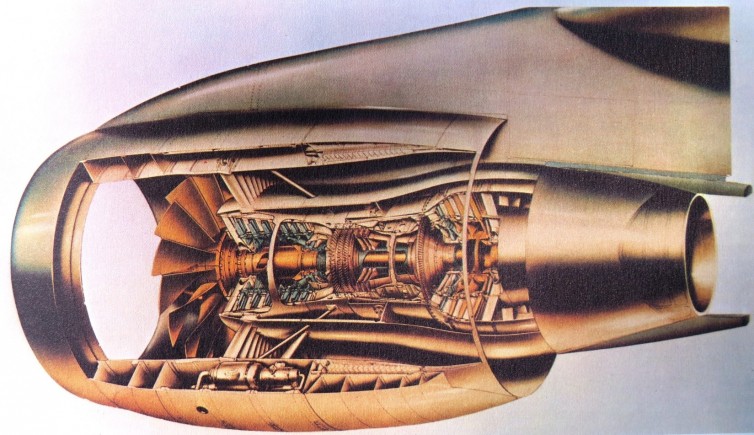
Cutaway Image of RB.211-22B – Photo: Rolls-Royce RB.211 Technical Overview – Lockheed California Company
With every aspect of the TriStar ’“ from its Rolls-Royce RB211 turbofans, to the autoclave bonding method of fuselage assembly, as well as the avionics…Lockheed had something to prove. The executive team in Burbank felt that the same people who delivered aircraft like the U-2, L-100 Hercules and the SR-71 could also build a commercial aircraft that made the 747 look quaint by comparison and could perhaps even eliminate the DC-10 before it came off the drawing board.
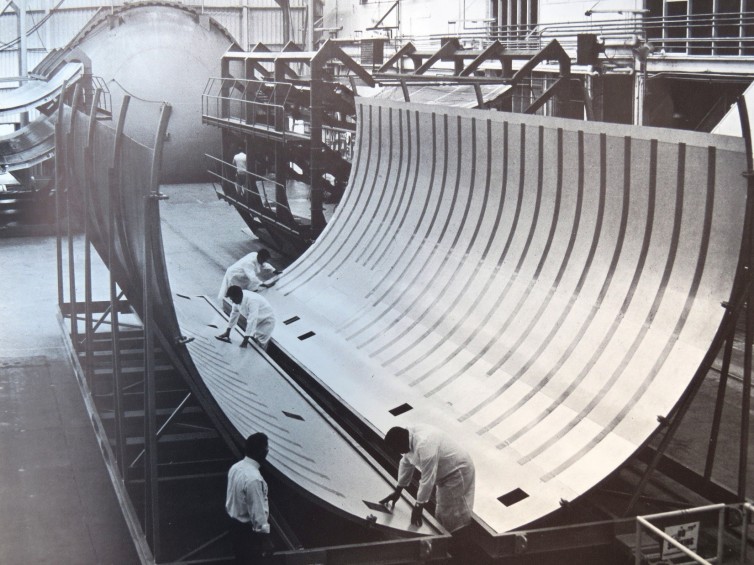
Fuselage barrel assembly of the Lockheed L-1011 – Photo: L-1011 Technical Overview Handbook – Lockheed California
The false belief that technology sells was something of a misnomer. History has often dictated that airlines don’t purchase the aircraft; they purchase the manufacturer. Case in point: United Airlines had demonstrated significant interest in the L-1011 TriStar. The engineering base in San Francisco felt that the TriStar was a superior product to the DC-10 and the general feeling was that Lockheed had made the sale.
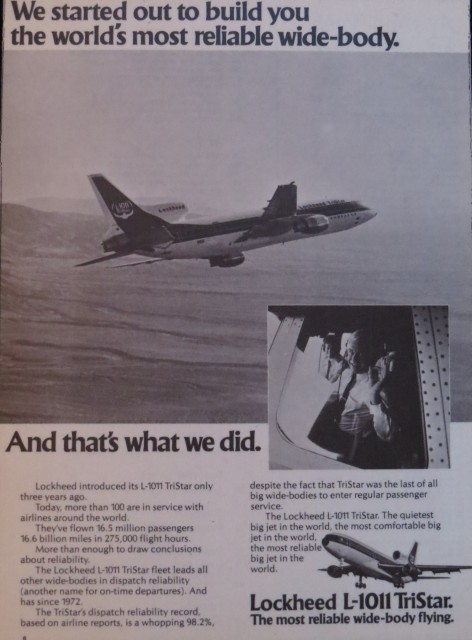
Lockheed was dedicated to making the TriStar as reliable as possible. This ad, from 1974, backs that up – Photo: Lockheed-California Company
At the time, Lockheed’s Daniel Haughton was ready to add United to the launch customer list. Charles Tillinghast of TWA was ready to hand over some of TWA’s early delivery slots to United. It wasn’t to be. The L-1011 may have had an edge technologically, but United’s management felt that Douglas inspired more confidence as a company (indeed, this has been proven when you consider what Airbus went through in order to penetrate the U.S. commercial market).
American Airlines, the catalyst for the entire L-1011/DC-10 sales race, played each manufacturer off the other…in the end, the goal was to get McDonnell Douglas to lower the DC-10 selling price, which they did. Lockheed responded by acquiescing to demands placed upon them by Eastern Air Lines to further lower the price again, thus undercutting the DC-10.
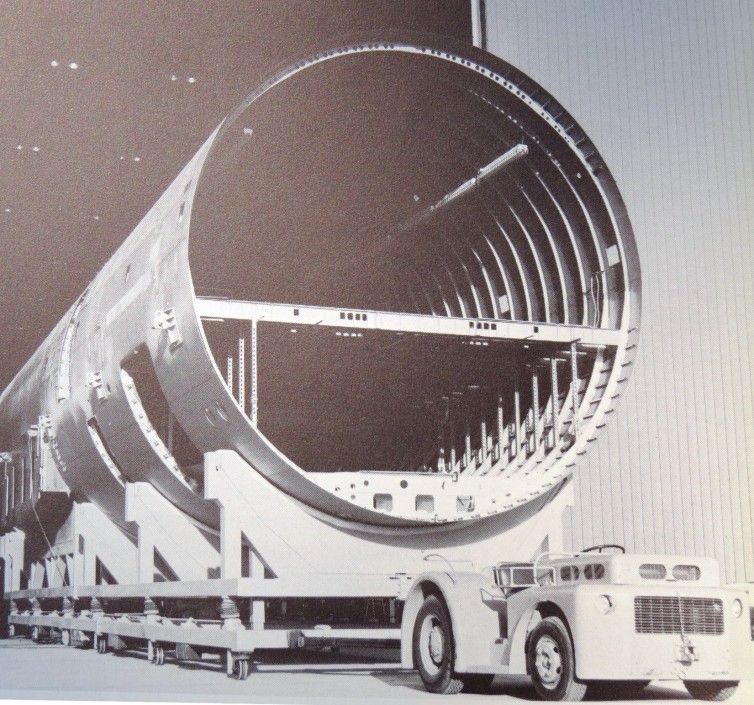
Fuselage barrel section being driven out of the factory – Photo: Lockheed L-1011 Aircraft Overview – Lockheed-California Company
It is interesting to note that while it is widely acknowledged in the industry that Boeing actively sought input into the design of the 777 by creating the ’œWorking Together’ group in the early 1990s, Lockheed actually preceded the concept by about 30 years. Once launch customers for the TriStar were clearly defined, Lockheed made an effort to work closely with customers to define details of the new aircraft.
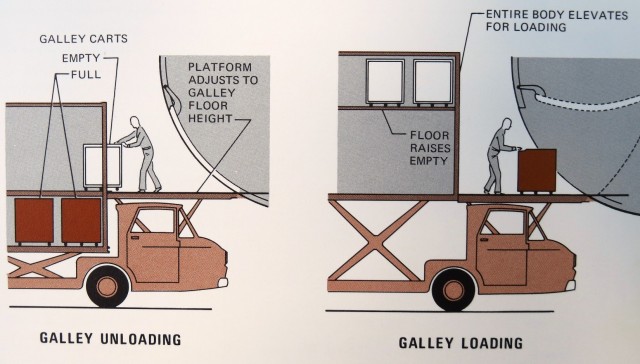
Air Canada input drove the inclusion of a dedicated galley service door into the design of the L-1011 – Image: Lockheed L-1011 Galley Configuration Handbook – Lockheed-California Company
With both United and American out of the picture, there was considerable freedom throughout the design process. For example, the galley arrangement and layout was driven by input from Air Canada who felt that turnaround times could be accelerated by having a dedicated galley service door. Other details unique to the TriStar that later made their way on to other wide-body aircraft were a selection of cockpit instrumentation – traditional round dials or innovative vertical tape instruments.
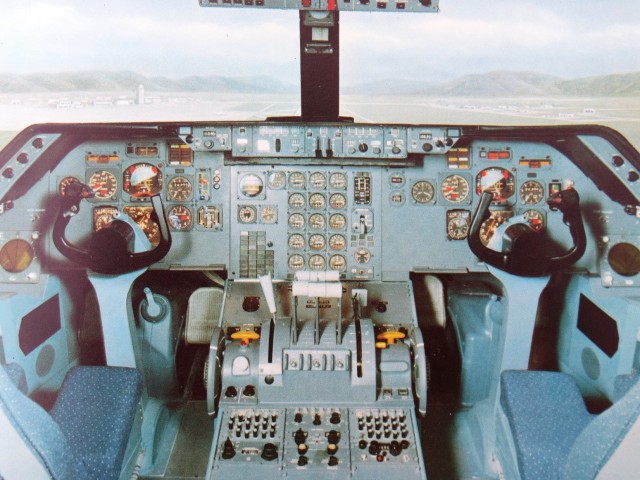
L-1011 blue flight deck with standard equipment round dial instruments. Photo: L-1011 Flight Deck Overview – Lockheed-California Company
Eastern and TWA pushed for on-board diagnostics and self-sufficiency wherever possible ’“ this led to considerable use of built-in test equipment that exceeded that of the DC-10. Other operators consulted on cabin layout and design and again we come to another interesting footnote in the history of the TriStar.
In designing the passenger cabin, Lockheed sought to make the aircraft feel more like a spacious home and eliminate the ’œtube’ feeling that was so common on aircraft like the DC-8 and 707. Whereas the DC-10 had a rather simple interior design, the TriStar had its entire interior concept conceived by the industrial design firm of Sundberg-Ferrar. The unique waffle grid ceiling lighting was considered to be highly advanced ’“ cold cathode lighting or ’œluminaires.’
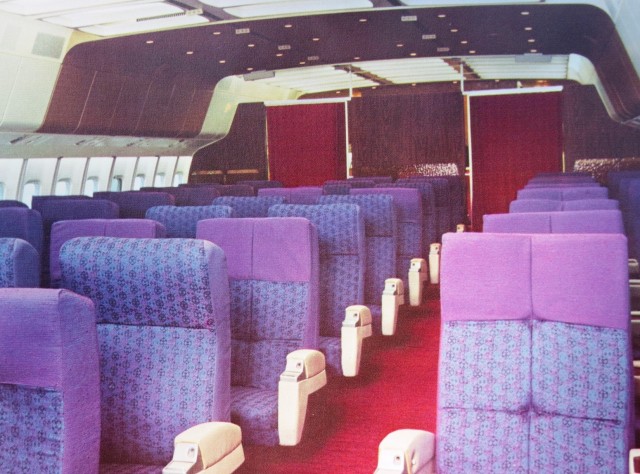
First class cabin configured in a six-abreast configuration. This mockup was later used by TWA as a cabin training device – Photo: L-1011 Interior Configuration Handbook – Lockheed-California Company
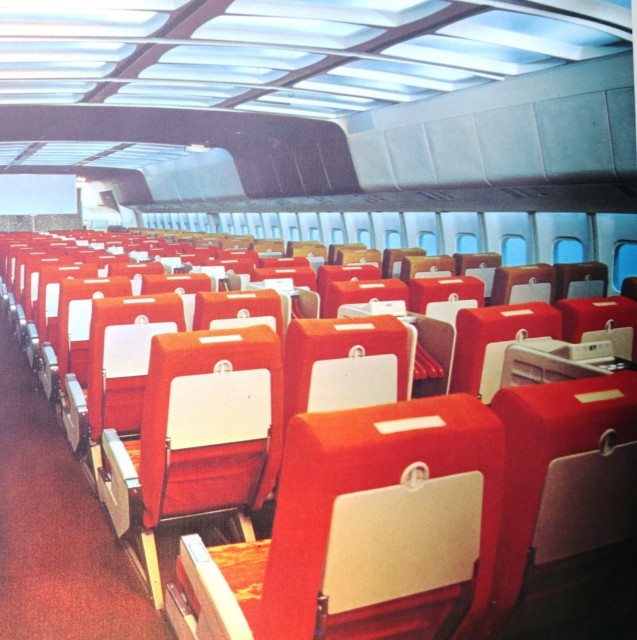
Coach cabin of the L-1011 with center line stowage modules – Photo: L-1011 Interior Configuration Handbook – Lockheed-California Company
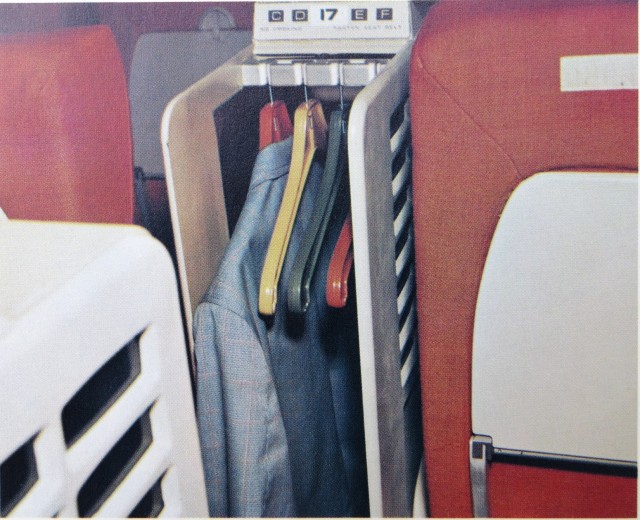
As the L-1011 did not initially have centerline overhead stowage modules (and passengers didn’t bring along the copious amounts of carry-on baggage that they do today). Lockheed installed these interesting mini closets for passengers to store coats and small items – Photo: L-1011 Interior Configuration Handbook – Lockheed-California Company
At each of the entry doors, small recessed spotlights provided a warm, intimate, and unique cabin atmosphere. Then of course, there were other unique aspects to the TriStar cabin ’“ initially planned for production aircraft was a self-tinting window (eat your heart out 787). Predating the 787 by almost 40 years, it was thought that passengers could control the tint of their window by using a small control panel in addition to the window shade. Ultimately deleted on cost grounds, it is an interesting example of history repeating itself since this is a highly-touted 787 feature.
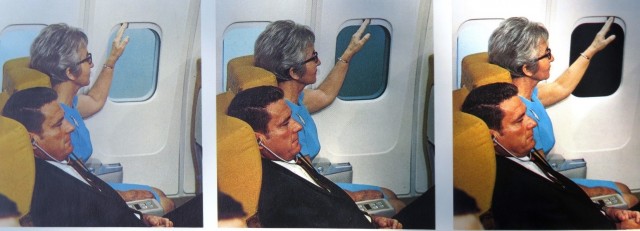
The L-1011 and the self-dimming window that predated the 787 by almost 40 years – Photo: Lockheed-California Company
Since the L-1011 was born prior to airlines charging for checked baggage, and passengers didn’t feel the need to bring massive carry-on items with them, the L-1011 featured compact overhead bins that were (to quote advertising of the day) ’œsized for a lady’s wig box.’
One interesting aspect of the L-1011 design was that it was capable of handling more passengers than the DC-10. The DC-10 had a maximum certified passenger capacity of 380 passengers, whereas the L-1011 TriStar was capable of seating up to 400. Additionally, Lockheed designed the TriStar fuselage to prevent any entry door being over the wing, thus easing evacuation slide design. The DC-10 had two doors mounted centrally over the wing. This video clip depicts the complicated DC-10 slide design for over-wing evacuation.
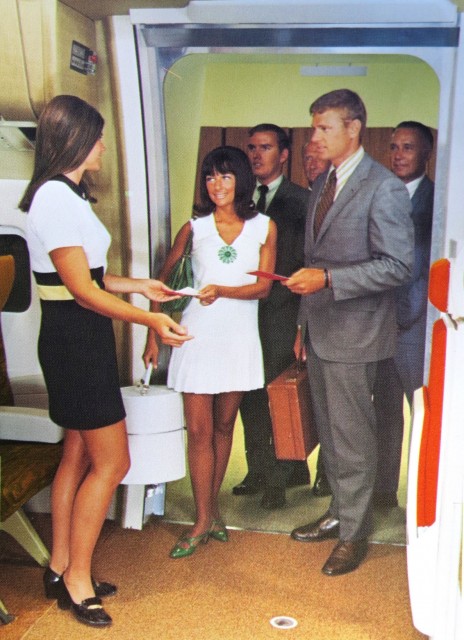
Lockheed equipped the TriStar with three Type ’œA’ entry doors on each side. All doors were powered electrically and retracted into the overhead section of the fuselage – Photo: Lockheed-California Company
Various Lockheed passenger cabin configurations are depicted below:
(All diagrams above sourced from the L-1011 Interior Configuration Handbook – Lockheed-California Company)
Additional storage could be found beneath passenger seats by flipping the seat cushion up ’“ a small storage container was located below and was designed to hold a pillow and blanket. The TriStar galley was always a fascinating study ’“ Lockheed claimed to have patented the concept of a lower deck galley and indeed several airline employees that I have spoken to with experience on all three first-generation wide-body aircraft have agreed that the L-1011 had by far the most spacious and user friendly galley.
Two small lifts (Lockheed was careful not to refer to them as elevators due to potential confusion with the aircraft control system) connected the lower deck galley to the passenger deck. The goal was to ’œtake the kitchen out of the living room.’
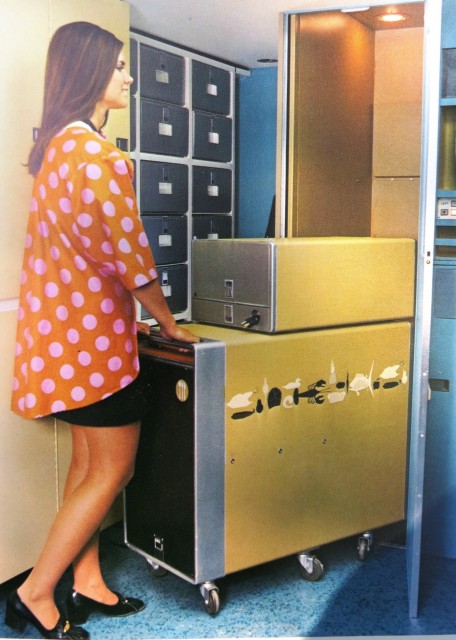
A galley cart being loaded into the lift to be sent to the passenger deck for meal service – Photo: Lockheed-California Company
Of course, the downside to this layout was that considerable cargo room was lost ’“ a fact that Lockheed recognized and later corrected on the L-1011-500, which despite being considerably shorter in length than the regular TriStar, had much more cargo room since the galley was relocated on to the main deck.
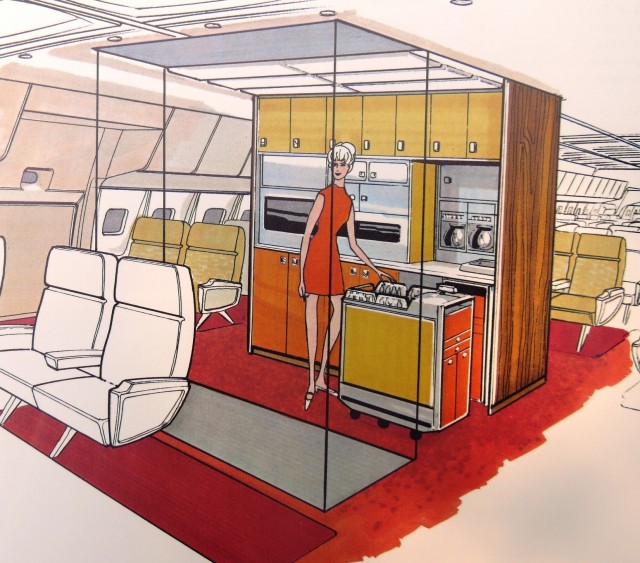
Lockheed was aware from an early date that the L-1011 sacrificed cargo room for galley space. Pictured above was an artist representation of an optional main deck galley service center. This concept was later executed on the L-1011-500 – Image: Lockheed L-1011 Cabin Interior Handbook – Lockheed-California Company
In reviewing considerable marketing and engineering material for the TriStar, it is interesting to note the very high level of optional customization that Lockheed offered customer airlines. The flight deck was offered in a choice of three colors ’“ blue, olive (a particularly horrible option), and gray. Most customer airlines selected gray and a few selected blue. To the best of my knowledge, no TriStar was ever equipped with an olive green flight deck, although it would have been an interesting sight to see.
Images: L-1011 Interior Configuration Handbook – Lockheed California Company
The TriStar is best remembered for its advanced avionics ’“ a completely clean sheet design that was far advanced over the DC-10 and the 747. The TriStar avionics fell under the title of AFCS (Avionic Flight Control System). The AFCS bundle included the APFDS (Autopilot Flight Director System), SCS (Speed Control System), PFCES (Primary Flight Control Electronic System), Triple Inertial Navigation System, SAS (Stability Augmentation System), and the DLC (Direct Lift Control). Included with all aspects of the AFCS subsystems was Lockheed’s advanced BITE (Built In Test Equipment) systems that provided constant fault monitoring, recording, and output tests on various subsystems.
One highly touted feature of the AFCS system was the CAT-IIIB Autoland system that was installed and certified right from day one. A selling feature for airlines that operated in environments with frequent weather issues, the CAT-IIIB Autoland was capable of bringing the TriStar down to land with only 150 feet of visibility. The technology was exceptionally well engineered and very reliable in service.
Lockheed’s goal was to develop an automatic landing system that was as seamless and gentle as a human. A joint effort from Lockheed, Lear-Siegler, and Collins (now Rockwell-Collins) resulted in a truly great avionics platform that outperformed that of the 747 and even Concorde. However, it was on May 25, 1972 that the system truly came of age when a completely automatic flight from Palmdale to Dulles International was completed, demonstrating the capabilities of the advanced avionics package.
Takeoff through climb, cruise, descent, landing, and roll out was done without a human hand on the controls. The system was monitored on the flight deck through a display that annunciated the 12 modes of the AFCS system.
I am the first to admit, the TriStar was far from the perfect aircraft ’“ Lockheed was slow to adapt the aircraft for long-range operations and the DC-10 already had the Series 30 available by the time the TriStar was entering service in its initial guise. One can argue that the TriStar 500 was a nothing more than a Band-Aid solution. The DC-10-30 had the range and capacity needed to be profitable and it had a seven-year sales lead. The -500 was impressive in other areas, with technologies that have not been duplicated even today, over 35 years after first flight.
The L-1011-500 program was launched by British Airways in the mid-1970s. Without delving into a complete analysis of the -500 differences, the basic aircraft was shorter than a standard TriStar by about 14 feet. This resulted in the smaller two Type I emergency exits being deleted. Maximum certified passenger capacity was 315, although this carrying capacity was never exploited by any carrier. By the time the aircraft entered service in 1979, it benefited from almost a decade of advances in avionic technology and, Lockheed being Lockheed, they worked to exploit this as much as possible. In creating the -500, Lockheed refined the aerodynamics of the TriStar by adding a fillet under the #2 engine intake (the ’œFrisbee’ fairing, named after Lockheed Director of Engineering Lloyd Frisbee) which reduced noise in the aft cabin.
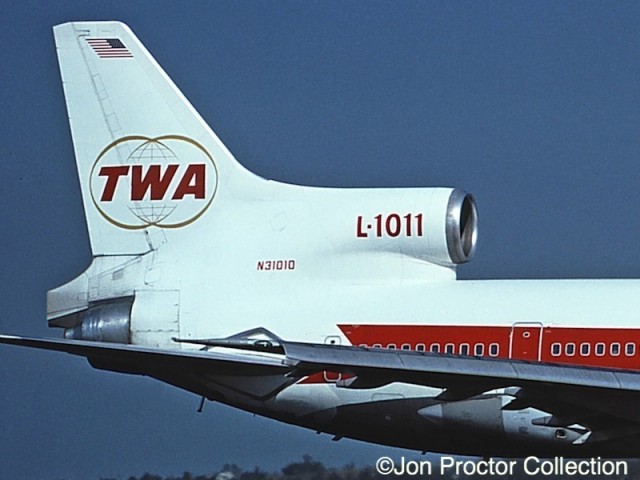
N31010 as delivered without the fairing – Photo: Jon Proctor
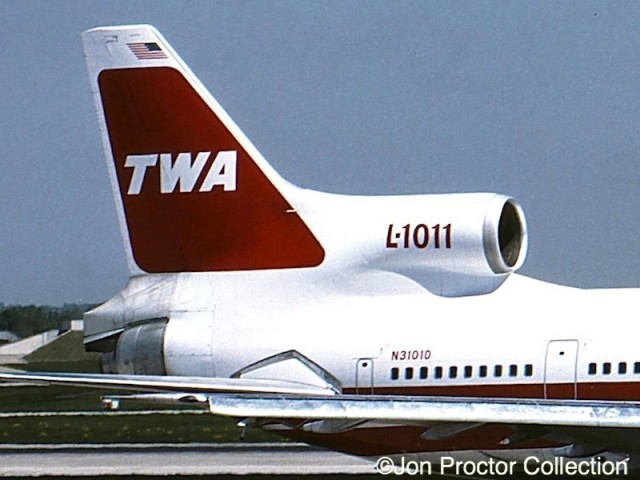
N31010 as modified with the fairing later in life – Photo: Jon Proctor
In addition to the Frisbee fairing, Lockheed also extended the wingspan of the TriStar and introduced a system of active ailerons, known as the ACS ’“ Active Control System. This early form of fly-by-wire technology combined three accelerometers located in the tip of each wing and one in the tail. The data collected from the accelerometers was fed to the Active Control System control unit located in the forward avionics bay to systematically deflect the outer ailerons to redistribute lift forces over the wingspan of the aircraft, improving ride quality for passengers and also, decreasing fuel consumption in some cases. Also included in the -500 were higher thrust Rolls-Royce RB.211-524 engines that were initially rated for 50,000 lbf. and later the uprated RB.211-524B4 engines were installed which brought thrust per engine to about 53,000 lbf.
Finally, the L-1011-500 also introduced the Performance Management System ’“ an early attempt at an integrated Flight Management System. Operational analysis of the TriStar fleet by Lockheed resulted in a noticeable pattern of excessive throttle movements in order to maintain an optimum cruise Mach number. While some airlines generally would accept a higher Mach cruise number at the expense of fuel burn, Lockheed developed the PMS to maintain an exact airspeed by gradually varying the aircraft attitude. In the event of an excessive speed condition, the PMS would command a slight nose-up attitude adjustment. In the event of speed loss, the opposite would occur.
The system was limited to an adjustment of no more than 50 feet in any direction. The design goal was to increase engine life, decrease thrust variations and provide a more relaxed working environment for the flight crew. The PMS effectively realized these design goals and the TriStar 500’s PMS was made available to older aircraft as an available retrofit. This system was copied by McDonnell Douglas for the MD-80: The ’œPERF’ mode on the MD-80 Digital Flight Guidance Control Panel (DFGCP) did the same thing, however McDonnell-Douglas failed to provide a tight authority limit and many pilots find that the PERF setting on the MD-80 leads to a noticeable see-saw motion.
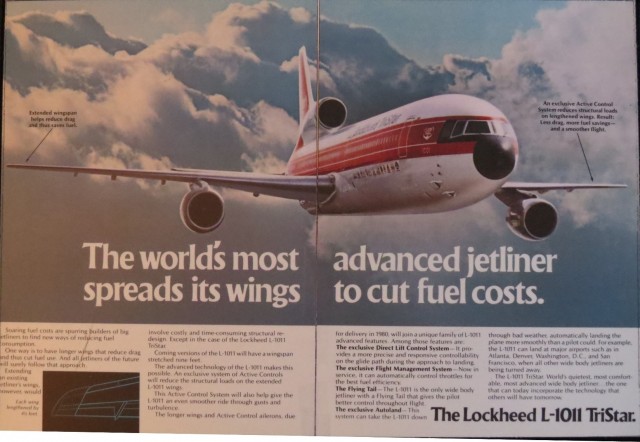
Lockheed advertisement touting the various system upgrades available to the TriStar with the aim of improving fuel economy and performance – Image: Lockheed-California Company
The Lockheed TriStar is an interesting case study in what can happen when two manufacturers (in this case, Lockheed and McDonnell-Douglas) attempt to split a market that simply could not support both aircraft. While there is no dispute that L-1011 was the more advanced of the two aircraft, and that the TriStar was easily the most advanced first generation wide-body aircraft, it is sad that this was the final aircraft that Lockheed would offer to the commercial market.
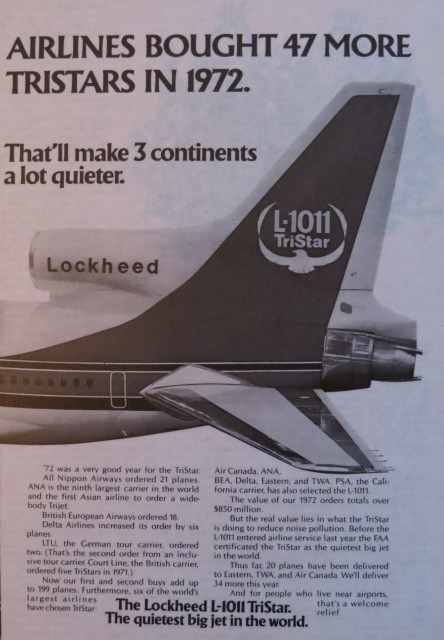
Lockheed Advertising announcing the sale of 47 more TriStars in 1972 – Image: Lockheed-California Company
One very interesting aspect of the TriStar program was that Lockheed had concurrently undertaken many derivative design studies of aircraft that could be based on the basic TriStar airframe and wing. These design studies consisted of several wide-body, twin-jet aircraft designs, and a fascinating stretched TriStar design that would have had two underwing RB.211 engines as well as two rear fuselage mounted RB.211s. This design study modified the basic L-1011 landing gear from two four-wheel trucks into a 777-style six-wheeled truck.
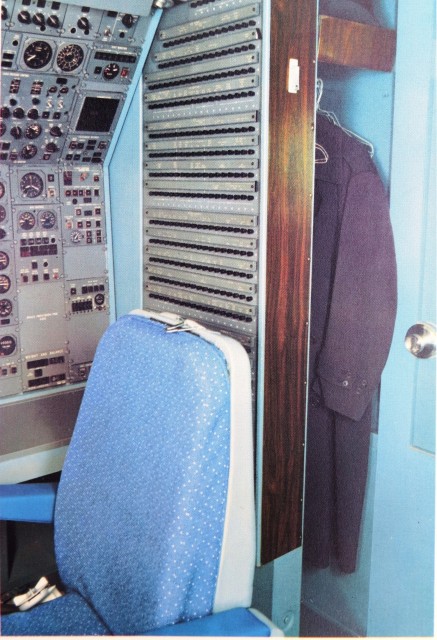
L-1011 Flight Engineer workstation & coat stowage room – Photo: Lockheed L-1011 Flight Deck Overview Handbook – Lockheed-California Company
As we all know, these design studies came to nothing. The failure of the TriStar program drove Lockheed out of the commercial business and very nearly to the brink of bankruptcy for the second time. The Lockheed bribery scandals did nothing to improve customer relations and Lockheed did not have the funds to pursue any of these designs. Had Lockheed pursued the twin-engine variants of the L- 1011 design, the company would have been able to beat Boeing to market and possibly drive Airbus out of the market entirely.
As time has gone by, it is interesting to think about where we would be today if the DC-10 had failed or never flown, Lockheed remained in a commanding position in the commercial market, and Boeing and Airbus were not the dominant players that they are today. Consider for a moment ’“ if Lockheed had been able to capture the DC-10’s market share as well as maintaining its own, the MD-11 would never have evolved, and the MD-80, MD-90 and MD-95/717 would probably never have been built since McDonnell-Douglas’ already precarious financial position would have completely imploded by the failure of the DC- 10. There is a very good chance Airbus would not be around ’“ Lockheed’s pursuit of a wide-body twin-jet would have destroyed the A300 in North America and very likely in Europe and the Asia-Pacific market as well.
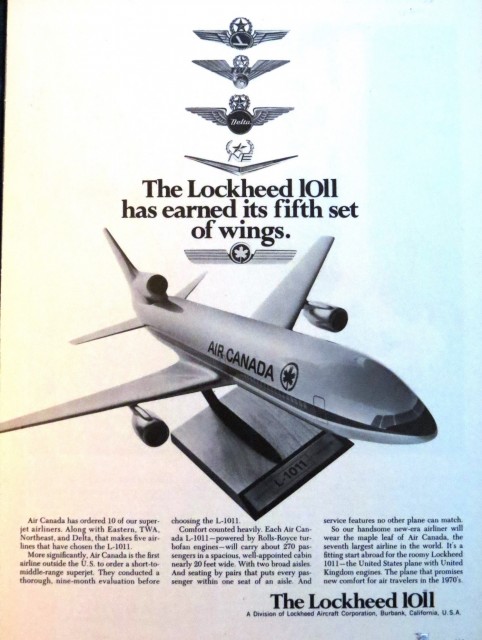
Lockheed advertising announcing the fifth TriStar launch customer – Image: Lockheed-California Company
It is safe to say that the L-1011’s success would have altered the landscape of today’s commercial aviation market significantly. It’s an interesting study in what might have been. Another aspect that needs to be considered ’“ the ever-popular family of Rolls-Royce Trent engines owe their existence to the L-1011 program. Lockheed and Rolls-Royce both suffered through the development process of the RB.211, and while it took a while to mature, the three-shaft concept certainly has been proven to be a true success story. The RB.211 has an exceptional history of performance, reliability, and durability. If Lockheed had given up on the L-1011, the RB.211 would have been flushed as well, ergo Pratt & Whitney and General Electric would basically own the commercial market.
The entire Trent family of high-bypass engines, as well as other offshoots such as the IAE V2500, would have evolved into completely different machines. The 757 would have never flown with Rolls-Royce power. The A330 would only have two (PW4000 and CF6) engine types slung under its wings. The A380 would be equipped with purely Engine Alliance GP7000 series turbofans. We fail to realize just how much the current world of commercial aviation owes to Lockheed, the TriStar, and Rolls-Royce.
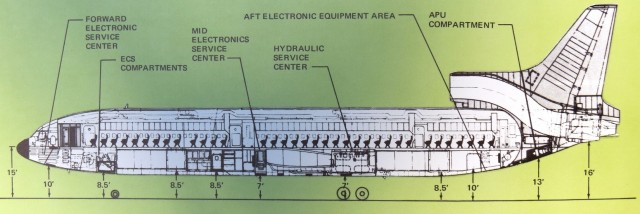
L-1011 schematic view illustrating various technical compartments – Image: L-1011 Fuselage Guidebook -Lockheed-California Company
One final note of interest – while the TriStar was the first wide-body aircraft to crash (Eastern Air Lines Flight 401), no passenger was ever lost due to a design defect that impacted safety. That’s something that cannot be said for any other wide-body aircraft from the same time frame.
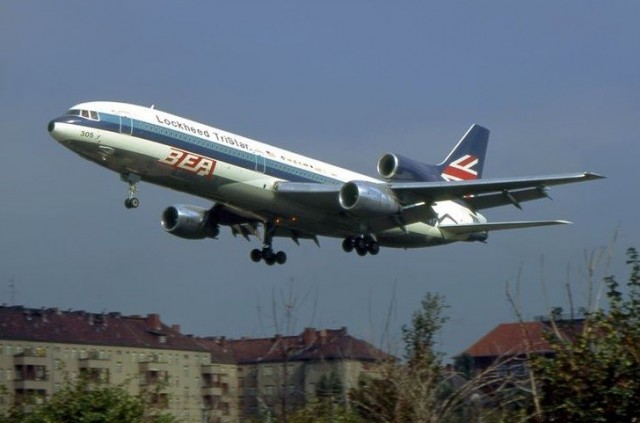
L-1011 MSN 1006 in a hybrid BEA/Eastern/Lockheed livery arriving in Europe on a sales demonstration flight – Photo: Lockheed-California Company
Regardless of the business case, I will always have a special place in my heart for the TriStar. It may not have been a market success, and it certainly wasn’t perfect. But as far as I am concerned, a more beautiful aircraft has never been built. All the technological innovation that Lockheed brought to fruition on the TriStar is a testament to the many men and women who devoted their efforts to creating the most advanced wide-body aircraft of the day, and what can happen when we push the limits of what is believed to be possible, use the most advanced technology and, when it is lacking, create it to make a product that is truly different, innovative, and with a character all its own.
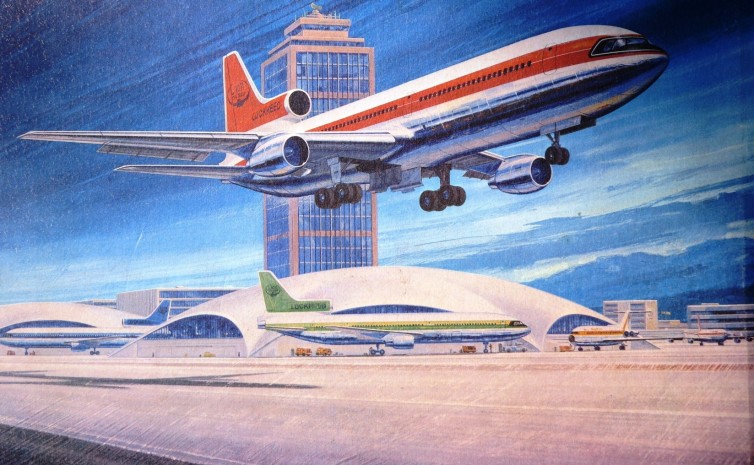
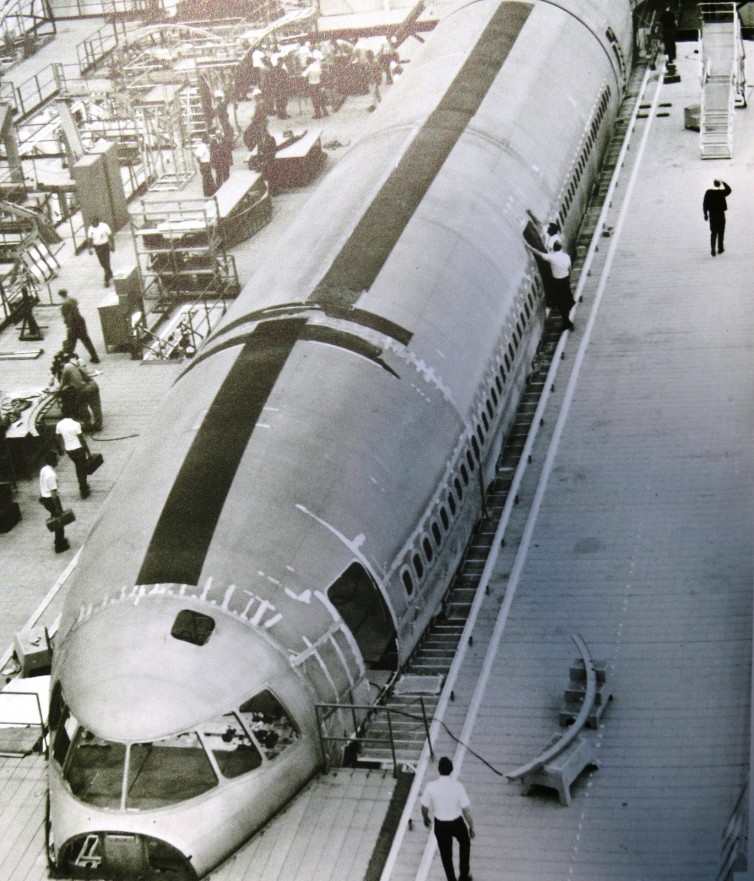
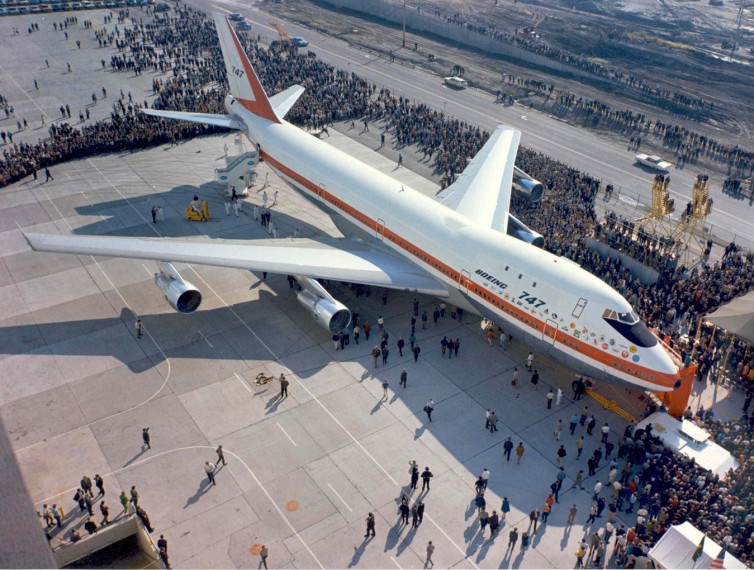
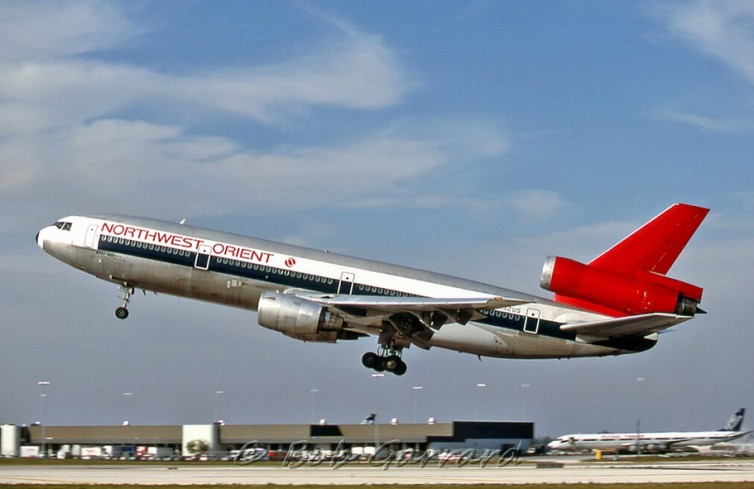
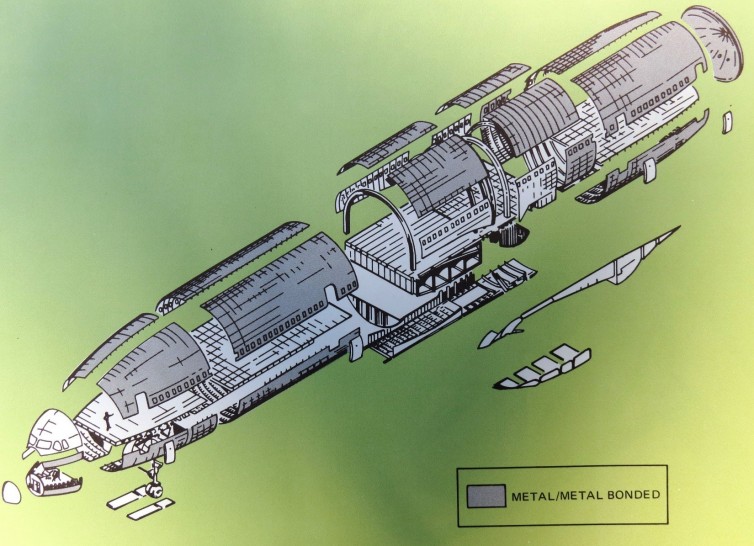
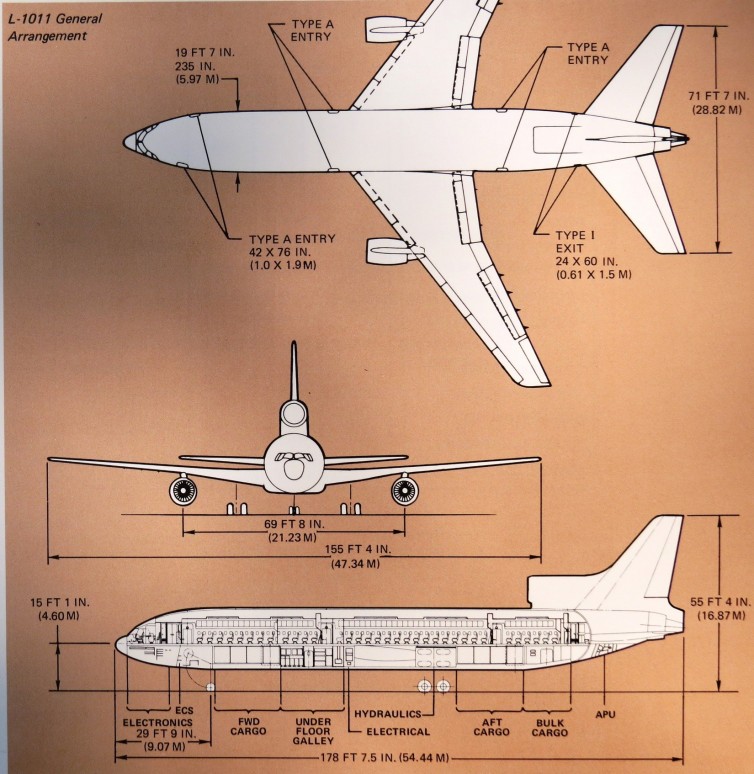
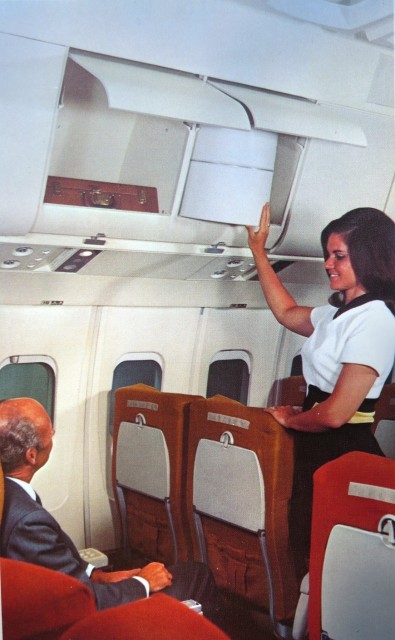
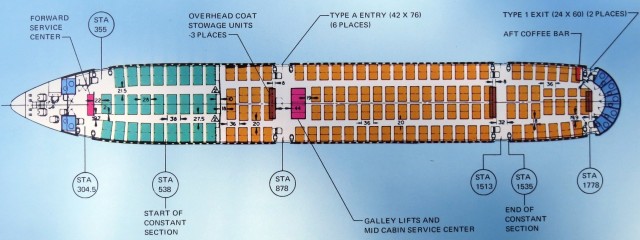
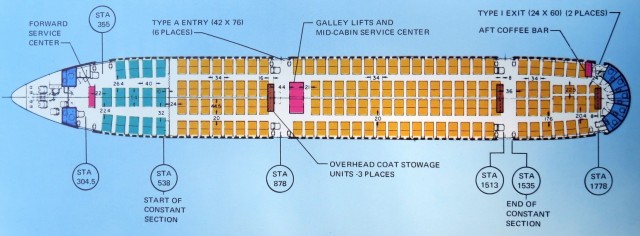
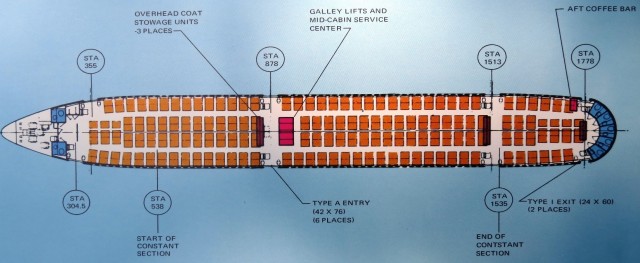
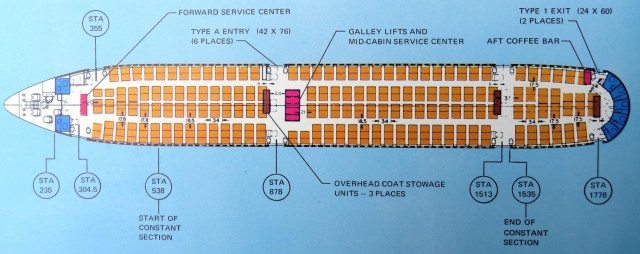
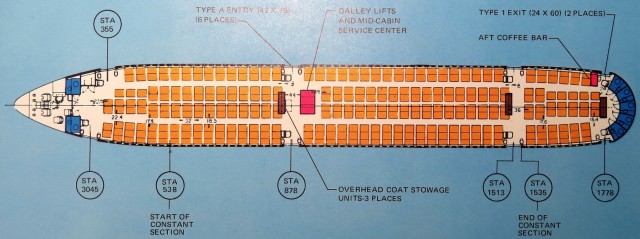
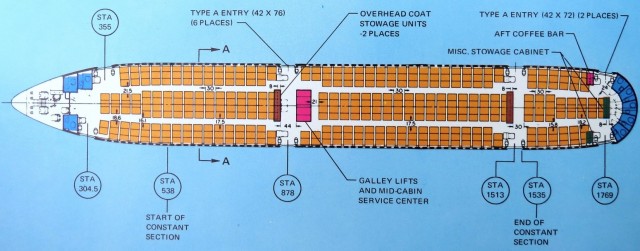
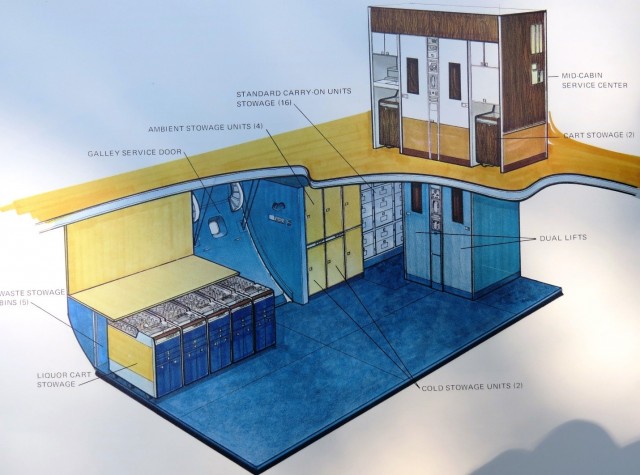
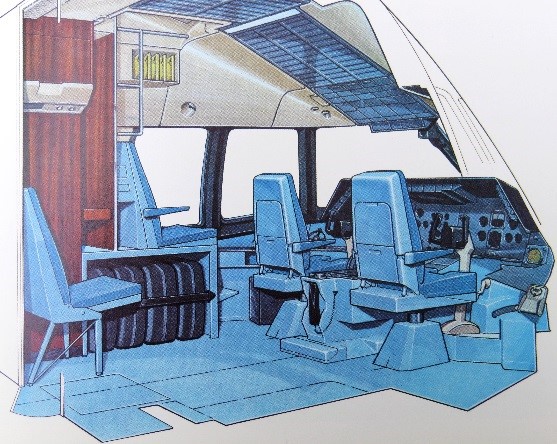
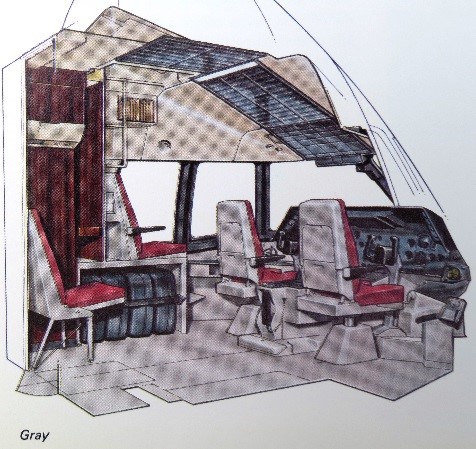
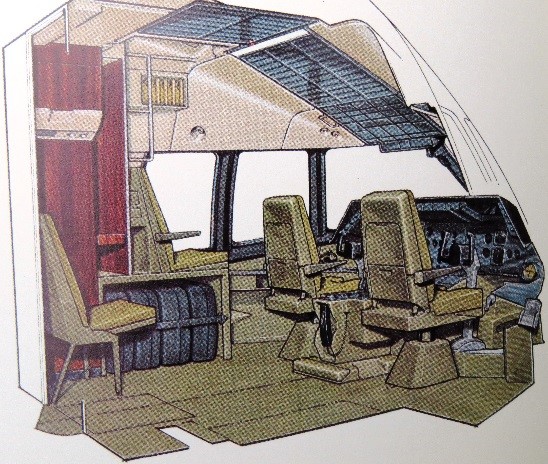
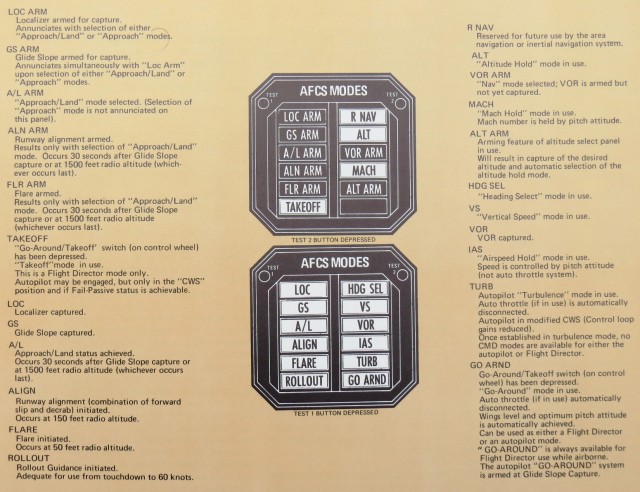
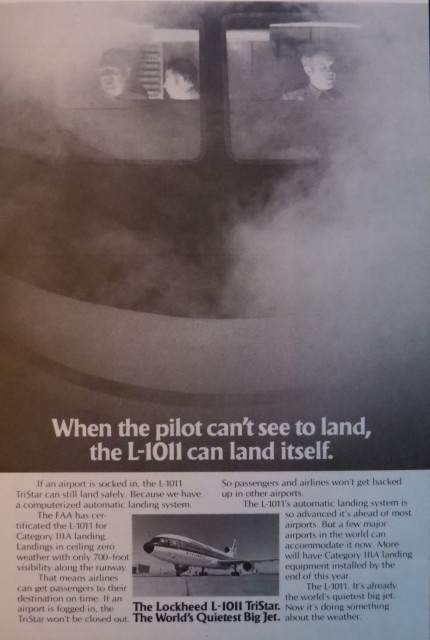
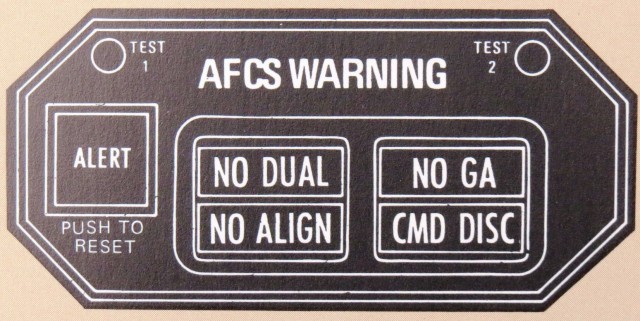

Terrific article. Well thought out and presented. Over my professional aviation career, I had the wonderful opportunity to accumulate about 5,000 flight hours in Trans World Airlines L-1011 aircraft. Flew them on TWA’s domestic routes as well as international runs to Europe, Hawaii and the Caribbean. The best aircraft I ever flew – bar none. During my 25 years with TWA, I flew Boeing 707, 727 and 747. All were great aircraft. However, the L-1011 was exceptional in almost every way. TWA always managed to purchase the smallest engines for it’s fleet of aircraft, so we didn’t have the high altitude at high gross weight capability as was the experience of Delta Airlines and others.
The top item on my bucket list is to fly in a Lockheed L-1011 Tri-Star “one more time.”
Thanks again for an exceptionally well researched the written article
Take care
C J Stott
Thanks so much for the positive feedback!
The L-1011 is one of those aircraft that seem to fly into one’s heart and stay there. The DC-10 may have been a sales success, but it has such a dark history. I recall when I was a little kid, my father had a business trip that would have him flying on a DC-10….I was petrified. Even at the age of 8 or 9, I had no use for the DC-10.
That being said, Douglas aircraft do have an amazing history of reliability and durability – but one can never talk about the DC-10 without taking a long hard look at all of the shortcuts and missteps that McDonnell-Douglas took in the development of the aircraft.
It’s interesting to see the different cabin configurations available. Had the internet existed back then, no doubt we’d have seen people complaining about airlines using the 10-across Y “slave ship” cabin the way we do with the 777 and 787 today!
“. . . people complaining about airlines using the 10-across Y ”slave ship” cabin the way we do with the 777 and 787 today!” – – Actually, you’d be hard pressed to get 10-abreast into the 787 as the fuselage width does not match that of the B777 airframe.
I’d love to share this article to a group of aviation geeks in a group I follow on Facebook, but when I share it, there is some “CloudFare DNS Error” message. Please try to fix, this is an AWESOME article.
> Mike Here”s the link to the article which I commented on
https://www.airlinereporter.com/2015/09/requiem-trijet-masterpiece-lockheed-l-1011-tristar/
If that doesn”t work, send an email to AirlineReporter.com and see if they can help you
Take care
Hey Mike,
We were having some issues with our server and CloudFlare, but I think we fixed it — seems to work for us now at least. Let me know if you are still running into any issues!
David | AirlineReporter
I was a passenger on Eastern Airlines L-1011s a few times in the mid-70s. My flights were between Bradley Field in CT to Atlanta, making my way down to Florida for Christmas with my parents. What a nice, comfortable ride – even in economy.
Very beautifully said article. Indeed Lockheed was a very tough competitor and they really set the standards. Your article had some points I didn’t know. The tinting window feature was new to me. Had no clue the L-1011 was capable of doing that. Safe to say this airplane was number then and today.
HI Mo To be clear, the L-1011 never provided window darkening as an option. I suspect it was something they considered and it made it into the publicity and promotion files. What was more important was the very far reaching engineering achievements Lockheed produced. The problem with the L-1011 was that probably was over-engineered. An example being the Douglas DC-10 and the L-10 had about the same max gross take off weight. However, the L-1011 weight about 90,000 pounds more than the DC-10 Empty Operating Weight. That essentially was 90,000 pounds of fuel, baggage or passengers the L-10 could not carry. The L-1011 had 11 hydraulic systems while the DC-10 had only 3. There were many other capability differences between the two aircraft. Also, Lockheed could only manage to sell about 250 aircraft. At that production level, the company could never make a profit.
There are a few errors in your reply:
First off, the window tinting was something considered early on as a comfort and convenience feature. If you read my article, you will see that I stated quite clearly that it was a feature that was deleted on cost grounds.
Secondly, the TriStar had 4 hydraulic systems, not 11.
The failure of the TriStar was due not to being over-engineered, it was due to the lack of a true DC-10 Series 30 (Long range/high capacity) competitor, the issues and delays related to Rolls-Royce entering bankruptcy and being nationalized and Lockheed facing a financial crisis due to the Rolls-Royce bankruptcy. The cost per shipset of engines for each TriStar grew significantly, leading to Lockheed having to raise the price of each aircraft and subsequently renegotiate sales contracts with all customers.
The DC-10 may have been a sales success, but it also was nowhere close to being as advanced as the TriStar, had a dismal safety record and lacked the innovative approach to engineering that the TriStar was noted for.
Peter
I did read your well written article and have no fault with what you shared. As far as hydraulics systems are concerned, there are four main systems, however, there are multiple sources of hydruallic power, i.e., engine driven pumps, electrically driven pumps, pneumatically-powerd pumps and the last ditch hydraulic power supplied by the Ram Air Turbine.
I agree that Lockheed could not have ”stretched” the L-1011 platform for a variety of reasons – Rolls Royce being a part of that issue. The FAA certified the aircraft only with Rolls Royce engines. Don”t believe GE or P&W ever provided engines for the initial L-1011 deliveries. The reliance on the Rolls power plants were very troubling because of several compressor blade failures – both on test aircraft and a couple of revenue passenger service. As I recall, our first L-1011″s were intermittently grounded by the FAA due to these turbine compressor problems. There also was a period of time where when TWA (and Eastern and Delta) had many operational restrictions placed on our aircraft in terms of takeoff weight penalties and other things which limited the range on the first few aircraft.
For the period I flew L-1011″s (1970 – 1990) we were plagued with Rolls Royce engine problems. One in particular was a ongoing difficulty to start any of the engines off the APU when it was very cold. Another problem was an inability to start the aircraft when the wind was blowing up the tailpipe. In some cases, the engines would rotate backwards and the pneumatically-driven starter could not overcome the engine rotating in the wrong direction.
Over all, I don”t think I”ve ever met a pilot who didn”t love flying the L-1011. I would have been nice is we could have consistently flown from Rome to Boston or New York in the summer time – but most trips we were payload limited – either fuel or passengers – but not both. Either we left passenger at the gate in Rome, or we filled the aircraft with pax and their bags, but knew before we ever left FCO that we were going to have to make a fuel stop in Paris, London, Shannon or Gander.
The avionics and auto flight systems were amazing (for the era).
Over all, I loved the L-1011. Wish it had bigger engines or a bigger wing or ???
Thanks for sharing your considerable knowledge on the Lockheed L-1011
Like the L-1011, the DC-10 also had multiple hydraulic sources. Six engine driven pumps, two auxiliary electrical pumps, two reversible motor pumps and two non reversible power transfer pump. So counting the L-1011 hydraulics as 11 systems by including all its sources but the DC-10 as just 3 by not doing so is not remotely a fair comparison.
With regard to the L-1011 and it’s hydraulic systems – I was basing my information on the flight manuals and the L-1011 Hydraulic System Engineering Handbook – for all intents and purposes, the aircraft was officially equipped with 4 hydraulic systems – that’s what was monitored from the Flight Engineer console…there were other subsystems that augmented the four primary systems, but from Lockheed’s perspective and an operational perspective, the aircraft had 4 primary systems.
So then Kevin are we really speaking of the hydraulic systems positioning within the body of the DC-10 being responsible for the Sioux Falls UA232 and the Chicago AA191 crashes (and some AA maintenance issues in the 191 case) rather than the number of systems/branches? I don’t recall any such issue with the 1011 and I assumed it had something to do with more hydraulic. backups.
I hated the 10 and as Peter mentioned, during a decade many people were extremely frightened to fly the beast. Not just the hydraulics but that cargo door that brought down the Turkish airliner in Paris ( maybe the worst single airplane crash of all time) and then the UA almost disaster out of Honolulu. When AA replaced a number of cancelled DC-9 flights with one DC-10 due to a 100 yr ice storm in Dallas, I thought seriously about refusing to fly, but I had to get there. As we tookoff and we’re making the left turn at 3,000 that was the custom at PHX, a momentary power loss felt like 350+ of us were going to drop out of the sky. I thought sure we were going to be the 3rd or 4th DC-10 crash of the era.
Possible to name the engineer referenced in the lead of this wonderful article? Credit where credit is due: most of the designers of these wonderful aircraft remain unknown.
As much as I would like to publish the name of the engineer involved in the design and engineering of the L-1011, security clearances associated with other projects that he was associated with for the U.S. Government prevent me from doing so.
Needless to say, he was a most incredible man.
I’ve never met a pilot of an L-1011 that didn’t sing it’s praises. A true pilot’s airplane seems to be the common phrase. And, they also sing the praises of the workmanship of the Tri-Star, something you never heard regarding the DC-10’s. As a passenger, my vote goes clearly to the L-1011.
Thanks for this great article. I learned a lot
Thanks for your feedback, Peter!
I am always happy to answer any questions that anyone has pertaining to the L-1011…it’s sort of a personal mission that this airplane doesn’t get written off and consigned to the aeronautical dustbin of history.
Absolutely wonderful story. I loved every word and every image!
Thanks Al!
Regards;
Peter
Thanks for the wonderful article. I certainly consider myself lucky that I had the privilege of flying the 1011 for a couple years. I agree it is the most beautiful looking aircraft ever designed, and its technological features set it apart from any other airliner.
I used to work in ops at DFW for ATA. I loved working the scheduled service at B12, but my favorite was working the L-1011 charters out of E. Just a magnificent aircraft.
My first international trip was in this aircraft – great memories. Subsequently got to fly an L-1011 full-size simulator. I was not prepared for that!
It”s not too complicated. You pull back and the houses get smaller. Push forward and they quickly get bigger. Lockheed calls this the ”House Size Controller” Boeing, on the other hand calls theirs a ”Builiding Size Regulator” Seemed to me that Lockheed intentionally named similar items with unique names, just to be different. One example – Boeing used Constant Speed Drives (CSD) on the generators to keep the frequency stable at 400 cps. Lockheed needed to the same thing, but they used something called the Independent Drive Generator (IIDG). Both produced current at 400 cycles per second.
Boeing now uses IDGs too. Essentially an IDG is a generator and CSD in one unit.
I was fortunate to fly the L-1011, on and off, from 1978 to 1998. I flew all three seats in it, was a second officer and captain instructor on it, was an APD, and finally had the privilege of being the Chief Flight Instructor on it for two and a half years. I flew it domestically and internationally, and ultimately flew versions from TWA, Eastern and Pan Am as well as the original Delta aircraft.
All the comments about advanced engineering were spot on. For many years, we were the ONLY aircraft that could and did do Cat IIIb landings, and did so routinely. Toward the end of my career, I flew the B-757 & 767, which were both Cat III capable. While they were OK, neither was better at a Cat III approach and landing than a Tri Star.
Finally, to demonstrate the Direct Lift Control to new students, I used to demonstrate it on training hops thusly: Just outside the outer marker, set 5,000 pph per engine fuel flow. Disconnect the autothrottles. Call for thirty-three flaps, and fly the aircraft with the thumb and forefinger of my left hand. I would not touch the throttles until I was ready to make the only power change needed to land at about forty feet. Roll in a slight amount of aft trim with that wonderful yoke trim control, and make a grease job landing. It was really difficult to screw up a 1011 touchdown!
Biil
You”ve done a good job of showing what it”s like in the L-1011. Who did you fly for – what airline?
Regarding your comment about it being really difficult to screwup a L-1011 landing, when TWA first started doing auto lands (in visual conditions to get everyone qualified) the landings were somewhere between ”quite firm” to ”Take That St Louis” to ”Amazing how much abuse this airplane will take…” We had a VP in Flt Ops who was responsible for aircraft purchases and design. During the initial line qualification process, he became alarmed at the hard landings – the auto land would not flare properly at 50 feet. Lockheed was diligently working on the algorithms to change this unfortunate situation. After several thrilling months of hard auto land landings, they got everything sorted you. Part of the problem was that we had it beat into us that we were to fly the aircraft at ”Bug+5″ and no higher. (Eastern and others were using canned bug speeds based on weight brackets) We unofficially found the 1011″s landed just fine if you carried a little extra airspeed (± 5 – 10 its). I have always thought that one of the problems with the hard auto land landings was the aircraft tended to run out of elevator authority because we were flying slower than optimal. Never saw anything in wiring about this, but sometimes the airplane felt squirrelly, especially if it were being flown by a line check airman or, even worse, training center instructor on a line trip.
Thanks again for sharing your impressions about a wonderful aircraft
Sorry it took me so long to get back to you- I lost track of where my comments were located.
I flew for Delta for nearly thirty-one years. I was fortunate never to fly for another carrier, and have to undergo the angst and uncertainty those guys whose careers were interrupted dealt with.
By the time I was flying captain on the airplane- in 1989- the autoland problems had been solved, and the touchdowns were generally very pleasant. I like your comment about bug+5- if the FAA wasn’t looking over our shoulder, almost everyone flew bug + 10, which seemed to give an optimally smooth touchdown. I never felt any “running out of elevator”, or really, running out of “flying horizontal stabilizer”. An exception to this might be landing on a relatively short runway, such as LaGuardia, because you could get some float with plus ten.
The only thing I liked better on the Boeing 757/767 over the TriStar was the autothrottle system. Of course, you had to use the autothrottles in Cat III work, but I never liked them very much for hand flying the airplane. The 767, however, worked very nicely when hand flying, and reacted much quicker to required changes. Even so, the 1011 flew the Cat III as well as any, and better than most, e.g., contemporary DC-10s and 747s.
Speaking of hard autolands- did you ever ride through a controlled crash on the MD-11? I never saw a smooth landing on that aircraft, and that fact was paramount in my decision to go back to the 767 rather than up to the MD-11 when Delta removed the 1011 from the Atlantic in 1998. Most pilots hated the MD-11- I’ve only heard one guy- a very good friend and former training department colleague- who said he “liked” the airplane. Talk about trying to make a silk purse out of a sow’s ear….
Bill, thank you for your very informative comments. I have had a gripe going back years, that originated from a landing aboard an L-1011 from Dallas to Orlando. Most people don’t recall Delta having a huge hub at DFW nor having a very large operation in Orlando but they did.
Back to the point, when we landed in Orlando, it was one of those unexpected landings, you know where you doze off and are startled to hear the “scruffing” sound of the tires meeting concrete. In this case I knew we were close, I could see we were floating over all that green Florida vegetation punctuated by countless numbers of ponds or lakes, but then smash, bang and a sound like metallic doors being slammed against each other. I picked that moment to take a bite of the little brown, molasses tasting, wafer/cookie Delta used to include with meals. As we “hit” I bit into my tongue like a hot knife through butter. Given I was a pharmaceutical regional manager who would be participating in a 5-day national convention, my injury was a tad inconvienient. With a mouthfilled with gauge, all the FA’s had in the First-Aid kit, I exited and there was the captain to the side wishing everyone a nice day in Orlando. Sadly. he had to endur numbers of corny comments and complaints from my fellow travelers. I wasn’t up to saying a word but I was staring with daggers in my eyes. And now I know, our landing may have been due to a quirk of my all time favorite aircraft.
Fantastic article ! I was lucky enough to have worked with the L-1011 for Delta. What a beautiful aircraft ! I remember two particular flights. One was on a newly delivered aircraft. Ship 740. Still had that “new car” smell. Great flight ! The second was on a flight from DFW to FRA. Frankfurt was totally fogged in. That L-1011 CATIIIB landing in Frankfurt was one of the very finest in my 30 year airline career. Sad to see it go, but I do have my Gemini jets L-1011-500 that I have been glancing at while writing this. 🙂
Excellent article, Peter. I was lucky enough to be part of “Sam” Wyrick’s Flight Test organization throughout the certification tests of all models of this fantastic airplane. A technological marvel, and a fine machine it was. I miss it.
Jim;
Thanks so much for your kind words!
Regards;
Peter
i had the pleasure of flying the L-1011 twice. First trip was on Hawaiian Air from SFO to HNL roundtrip in 1990 and second was TWA from SFO to JFK roundtrip in 1992. i loved the Tristar and remember my flights very well. Sadly i miss the tristar and it was a marvelous airplane that was extremely advanced when she was introduced. Long live the Tristar!!!
Dad worked on the passenger entertainment system design. As a result, we had all sorts of L-1011 and other Lockheed paraphernalia around the house during the years he worked at Burbank and Palmdale. I had the great privilege to fly L-1011’s on three occasions over the years: Delta from ATL to Stuttgart, TWA from BOS to SEA via STL, and the final time, ATA from Kuwait to San Diego via Budapest, Shannon, and Brunswick on my way back from a 10-month deployment when in the Coast Guard. The last one was the best for many reasons — not the least of which was getting to chat with the captain at various points along the way.
Great article!
Hi Brian;
I would be fascinated to see what L-1011 material you have.
I have been reading about the Passenger Multiplex system and the technology that Lockheed engineered into the TriStar’s entertainment and passenger utilities was truly cutting edge. Any information that you would be willing to share would be greatly appreciated!
One of these days I am going to try and post all of the L-1011 material that I have collected over the years!
Regards;
Peter
Peter, any chance we might see you do an illustrated book on the L-1011? If you made mention of a book within your article, I missed seeing it. The biggest problem with your writing and subject matter is that it brings so much enjoyment you tend to gulp it down the first read rather than savoring each word and each image, as I will be doing many times in the future.
Thanks for a very well written article. My father was the EAL rep at Palmdale during the 70s. I have many wonderful memories connected to this plane. Dad just passed away but I can feel him smiling over my shoulder as I read.
During my time with TWA, I made several trips to the Lockheed plant at Palmdale watching our L-1011″s take shape. Those were exciting times. I remember we all had to wear surgical booties over our shoes so we wouldn”t scratch the aluminum airframe and flooring! Talk about quality control.
Thanks for posting about your dad. Nice memories, I”m sure.
CJ, did you know “Dog Easy” based at JFK
Great story! However the second photo is mine, not Lockheed’s, taken as the prototype taxied in at Palmdale following its maiden flight. ©Jon Proctor credit would be appreciated.
One item that I would be happy to post here is something that I know for a fact most people will have never seen – as I’m sure people know, Air Transat got it’s start with a fleet of L-1011 aircraft that were cobbled together from Air Canada and Eastern Air Lines aircraft. When Air Transat retired it’s fleet, they had a celebratory retirement ceremony for the L-1011 that coincided with the closure of Mirabel Airport.
They put together a DVD that features all of the Air Transat founders speaking about how the L-1011 was instrumental in the success of the airline, as well as how the advanced features of the L-1011 also played a role in selecting Airbus to replace the L-1011 fleet. (It was suggested that the L-1011 aircrews felt that the 767 would have been a step backwards after flying the L-1011)
Anyway – the video is really touching….it may sound stupid but when they are playing Frank Sinatra’s “My Way” and it shows the L-1011 being towed away, it’s the kind of thing that puts a lump in this Avgeek’s throat.
If people are interested, I will encode the video and post it up here!
I strongly doubt there is a single soul who would find your statement “stupid”. I am a great admirer of women, but not far behind is the L-1011. I suspect I’m not alone.
I was a little surprised with the Air Canada connection. I knew Air Canada flew a fleet of DC-8’s, and DC-9’s, isn’t it a bit odd that they would wait through the introduction of the DC-10, and then buy L-1011’s? If there is a story behind this, would you share it was the rest of us?
Hello, Parker. I have no idea whether you’ll see this, but apparently, airlines in British Commonwealth countries like Canada saved on customs duties by buying Rolls Royce engines. This was written in one of the L-1011 books.
I believe the book was James T. West’s The End of an Era: My Story of the L-1011, which in any case does go into great detail about economics, pricing, and sales efforts.
I saw Air Transat’s L1011s for years but never flew on them, though it is likely that I flew one or two when they were still with Air Canada. It was a terrific aircraft as a passenger. The RB211 was a great engine.
Thank you for this great piece of write-up and all the beautiful responses following on this incredible and wonderful machine which I love. I have been involved actively in the maintenance of this great airplane for more than 29 years in regular Airlines schedule operations and in rugged Chartered, military and hajj operations to places a lot of people or airlines would not fly to . The L1011 is such a versatile work-horse aircraft which can have so much flexibility to offer if only you know how to make use of its characteristics.
In the beginning, the very advance avionics had me working many long overnights on squawks never faced before and its truly way ahead of its time. It also has the most spacous flight deck of any commercial airliner. The E&E compartment and the Hydraulic Service center are unbelievably big.
The L1011 is a huge part of my 50years aviation career.
Thank you so much.
All the best to all Lockheed Tristar lovers.
Mr Lee
Thank you for your heart-felt description of your work on the Lockheed L-1011 Tri-Star aircraft. Working with people who had the same level of dedication and love for this aircraft made it a pleasure to fly. TWA had 33 L-1011″s. I managed to accumulate over 5,000 hours of flight time in 1011″s and cherish every minute. They were magnificently overly engineered. Once again, another fabulous aircraft from Lockheed Corporation.
Thanks again and take care
Y.C.
Great sentiments. I too enjoyed working on the L-1011.
Regards, Stu
Air Canada ordered olive cockpits for their TriStars, they looked much better than the Douglas DC-9 turquoise cockpits in my opinion. In fact Delta painted their blue cockpits gray as they went through overhaul in the 90s.
Most multiplex systems were made by ISC Telephonics, but Pan Am used the 747 multiplex system on their TriStars. Both systems were unreliable and some were replaced by a much better system made by Matsushita.
Nice article!
I forgot to mention that the Pan Am multiplex system was made by Hughes.
Louis
Is it just me or did anyone else think, for just a second or two, that was supposed to be an L1011 cockpit image was instead an image from some Soviet coal burner used by mistake? I have never seen a turquoise cockpit in a Western commercial aircraft. Once we more closely observe the instrumentation the thought vanishes, but for a second….and the argyle colored model, horrible
Hi Parker,
Thanks for your kind words about my article.
The blue cockpit was certainly unique and was a relatively common color selection by customer airlines….according to the production documents that I have in my collection of L-1011 stuff, airlines that selected the blue cockpit included TWA, Pan Am and possibly Eastern & BEA.
Interestingly enough, McDonnell-Douglas painted many DC-9 and MD-80 cockpits that lovely shade of blue. A retired pilot friend of my parents’ told me that painting the cockpit in that color was a safety feature…Why, you might ask? Well it is such a horrible color that it serves 2 incentive to the pilots not to crash….because nobody in their right mind would want that to be the last thing that they see prior to meeting St. Peter!
Once again, thanks for your high praise regarding my work!
Be well,
PMC
I flew the L10 for ATA also the DC 10 as a professional F/E , yes the L10 is by far the best in every aspect. Sure miss flying her. I still have a lot of training manuals and stuff. You interested?
Hi Frank
I was an ”Oiler” on the L-1011 for a while, as well. Great airplane. Had an opportunity to go to Palmdale, California to the Lockheed facility where the L-1011″s were built. Saw several of TWA”s L-1011″s on the assembly line. I remember that we all had to wear surgical booties before we went inside the airplane to so we wouldn”t scratch the zinc-chromate primer that was on the floors! Goes to show how obsessed Lockheed was about building and delivering a quality product. Because I volunteered on many ALPA committees, I also worked with Lockheed during various investigations about L-1011 mishaps (both TWA aircraft and other airlines, as well).
You bet I am interested!!!!
E-mail your Number and we can see what you want. un******@*ol.com
Hi.
Looking for L-1011 technical/training material. Are you able to help?
I may have a TWA L-1011 flight handbook. Don”t know. We are out of the country for two weeks. Remind me about October 15th and I”ll go looking
As promised, here is the Air Transat L-1011 Retirement Video from 2004….it’s about 20 minutes long….pop some popcorn, put your feet up and enjoy!!
https://youtu.be/dlu_lzkXHAc
Corrected Video Link:
https://vimeo.com/146405275
YouTube claims the video is “unavailable”. Tried accessing from an iPad and three desktops, still no go
In 1975, as a ridiculously young F27 captain in Bahrain, I was asked if I would like to join the yet to be delivered L 1011 fleet at Gulfair.
Silly question! It was one helluva leap from an F27 I remember only too well! What a simply fantastic aeroplane and thus started an eleven year love affair. To this day I still think the Gulfair colour scheme was the very best out there. I subsequently never had the same pride when I flew for other airlines – they seemed drab in comparison. I was very lucky indeed to move seats, on the L 1011, just three years later to have an eight year view out of the left forward facing window.
I thereafter did twenty five very interesting years on the B747/757/767 family but the L 1011 was something extra, extra special. My heart swelled with pride every time I saw her on the ramp or in the sky.
Jesus I’m feeling emotional just writing about her!
Thank you for a brilliantly written article.
Alan Walker
I find is wonderful that so many pilots (myself included) have similar feelings about flying the L-1011 (any seat in the cockpit – Captain, First Officer or Flight Engineer). Until these posts started to populate G+, I just assumed I was the one pilot around who felt this way about flying Lockheed”s tin. Turns out not to be true. So, to my fellow L-1011 aviators, thanks for your comments and continued efforts to keep the L-1011 history and price alive
Take care
Sorry for the addt’l posting.
But did you know “Dog Easy” @ JFK
Can”t say I remember ”Dog Easy” If we had used phonetics it would have been ”Delta Echo” But, either way, can”t say I remember anyone with that nick name
Well no problem.
Dog Easy was his Navy call sign and just carried it wherever he went.
Even named his 30′ boat that name.
He was TWA from 1956-1987.
Lived in E. Long Island then moved to S.W Fla in 1976
The humorous thing is when I read your 1st comment I was sure my dad wrote that.
Almost word for word.
Here it is December 9th and I have come upon the best website seen in years. Thank you for the great images and the very complimentary essays. The L-1011 was just an incredible aircraft. When you were able to observe an L-1011 standing on the end of a runway with that very futuristic sharpened-point nose that seemed to extend for a 100 yards due to the position of the nose wheel along with the number #2 that looked liked like a natural part of the fuselage. To have it advances forward with that beautiful Growling roar, you have the perfect combination of art and awesome power.
My neighbors father-in-law pulls up now and then in his monsterous ’59 Cadilac and when he is done asking the grandkids about school and they’re done just sitting and talking, he makes his way a few yards west and we talk airplanes. This older gentleman worked for many years with Douglas and while he and I battle it out regarding the DC9 in any incarnation, he likes, I don’t, and I still can’t bring myself to call the newer versions MD-80, 88, 90’s he insists the MD’s were a whole different creature, I don’t just another damn DC9 to me. What we do agree on is that the L-1011 was an all together new animal far superior to the “rush job” he calls the DC-10, despite the fact he put in years working on it.
In the world of “if only’s”, had the L-1011 been a 200-250 passenger widebody, instead of matching or exceeding the 10’s capacity, if only it had the 10’s range at a lower cost per seat mile and if only Lockheed had been able to match or come closer to matching the first flight date, history could have been far different. While my friend had nothing to do with the problematic and deadly cargo door, he was and is still very critical of the dunderheads who talked management out of using what had been proven, for the sake of a few extra cubic feet of cargo space.
As an aside I wonder how the 787 vs A350 battle will shake out, the 787 being the ground up creation, the A350 a conversion from other aircraft with the standard Airbus wing. This battle might be the reincarnation of what took place between the DC10 and L-1011.
I enjoyed this arrival.
I worked for ATA as a R and E mech, I grew to love the Tri-Star. We were a second airline operator. But this ac was our work horse for a lot of years in the mid-90s. We had -1s, -50s -100s and -500s. (Any 1011 with a 50 in the model was not a factory ac it was moded. IE a -50 had bigger gear to carry what a -100. A 250 was a -200 with bigger center fuel tanks. ect…..)
The Avionics were the best bar none. I have worked the 747-100,200,300 400 and -8. 757,767,777, dc10,Md-11,the A300.
The new gen ac are just now competing with what the 1011 had in the 70s.
She had her weakness. But there is still nothing close to theDLC system.
Thank you for the article.
I paxed once in the 1011 and a couple times in the 10.
Just after touchdown in the 10 when seated in the back you would see interesting counter gyrations between the fuselage and mid galley.
In the 1011 you could see Schlieren lines over the wing
I have always loved the L-1011 and had the privilege of flying on her three times. In 1988 I went to Japan on an exchange program and after several days of orientation in Tokyo we were bused to Haneda Airport for flights to various parts of Japan. I was headed up to Akita in northern Honshu and word was that a 727-200 operated the service. But it was mid-summer (a busy travel time) and I was overjoyed when the bus taking us from the terminal to the aircraft pulled up along side an ANA TriStar. It was especially sweet to view her from down on the tarmac before climbing the stairs to the cabin. Three years later I was living in Nagoya, Japan. Delta had recently started a Nagoya-Portland service using TriStar 500s so when it came time to book a trip to Boston to attend my sister’s graduation I went straight to my travel agent and said “put me on Delta!”. Twenty-five years later I still remember the pleasure of doing that return trans-Pacific flight on a TriStar 500. I should mention I’m from Auckland, New Zealand and the TriStar was a rare bird in this part of the world. I don’t believe a single airline operated scheduled TriStar flights into Auckland but there were plenty of DC-10s – NZ, MH, TG, GA, SQ, UT, CO, AA, CP. Thank you everyone for sharing their memories of this truly magnificent flying machine!
I’m an old Scotsman with some assoc. with the cf105 Avro arrow in Canada and years in the aircraft business and the raf.the 1011 I flew In as passenger many times. I liked that kite. The dc 10 didn’t feel good.it didn’t look right. The de hav aircraft alway s looked right. Don’t laugh. Aircraft people know what I’m talking about. A lot of guys from AV roe Canada had a lot to do with its creation design. They were the leaders in the field. That’s why the USA came up and hired them. They got a bargain. Just look at nasa.
Fantastic article and comments. Legendary Aircraft. I had the privilege of flying on on back in the 1980s. They don’t build them like this anymore.
What a thrill to go through your article, the responses, and especially the Air Transat video! I worked for GE during the introduction of the wide-bodies and was, of course, grateful that the DC-10’s market success paved the way for the CF6 series to gain a foothold at Boeing and Airbus as well. But as an aero engineer I could not ignore the undeniable superiority of the L-1011 over the DC-10, and there were many times during those years that many of us wished we could have been able to get our engine on that aircraft as well, for we knew it would have opened the doors to a much more successful market for that aircraft. For me that would have been a wonderful happening — as an 11-year old boy my very first flight was on an Eastern Air Lines Lockheed L-1049 Super Constellation from Idlewild to San Juan. While nothing could ever match the sheer physical beauty of those old Connies, the L-1011 was certainly the most visually appealing of the wide-bodies.
As competitors to Rolls Royce, both GE and Pratt leaped to their assistance after they experienced an uncontained fan disc failure on one wing engine and suffered damage to the other from the shrapnel thus ejected, forcing an emergency landing powered only by the tail engine. It was subsequently discovered that a batch of fan discs for the RB211s had a material defect and had to be removed from not only the production line at Derby but from flying aircraft as well. Both competitors relinquished production slots at their US vendor in order to produce replacement discs quickly.
This and other problems with the RR engines, unfortunately,eventually made that magnificent aircraft uncompetitive in the marketplace, and it is sad to realize, as you point out, that while the L-1011 established RR as a viable large-engine competitor, Rolls Royce put Lockheed out of the commercial aircraft business.
Yes, the inability to hang another engine, either the CF-6 or JT-9, on the L-1011 was a detriment to its future development. However, because of the design of the S-duct, no other engine would fit- they were all to large in overall diameter. You may not have been aware of the fact that the RB-211 was a triple spool engine, whilst the others were double spool. In theory, the triple spool could produce the same or more power that the two spool engines while providing reduced drag from the smaller cross section. The only other solution would have been to hang a larger diameter engine on the wing pylons, and leave the RB-211 in the tail- not a practical task.
The RB-211, like the rest of the aircraft, was an engineering marvel, and way ahead of the DC-10 in autoflight systems and many other areas. We never had any problems with the cargo door, as did the DC-10, and no total hydraulic failures, as happened to United 153 at Sioux City. As you pointed out, though, the RB-211 did have its problems at first. Mechanics used to joke that it wasn’t even as reliable as the Wright R-3350 with the PRTs- a notoriously unreliable engine. Initial TBR on the RB-211 was something like 25 hours- totally unacceptable. In time, the RB-211 became a very reliable engine, and in all the years I flew it, I had no failures and only one precautionary shut down, which turned out to have been caused by a false positive indication of a turbine air overheat.
I’m glad you enjoyed flying in it- I certainly enjoyed flying all three seats on it.
HI Bill
Thanks for your post. I do recall the RB-211 being a triple spooled engine. In the cockpit, the engines were very linear with regard to throttle movement and spool response. Another example of why the L-1011 was so stable. As you know, the L-1011 aircraft were certified for Cat III early on. This was due to a combination of things, dual autopilots, exceptionally smooth roll control, Direct Lift Control (spoilers moved slightly to keep the aircraft on the glide slope with no increase in drag.)
When everything was working properly, the L-1011 was a beautiful thing to behold. The trick, of course, was that there were many times when everything wasn”t working properly.
Thanks again and take care
Very good article. I was fortunate to fly on Air Canada’s TriStars between YYZ and YVR beginning May 1981, both -100 and -500 models. Last flight was summer 1994.
I worked several years on the USAF variant of the DC-10, the still-venerated KC-10. I’m unsure if there was ever a serious consideration for Lockheed to build a tanker variant but I’m sure the KC-10 buy was another nail in the 1011’s coffin. There were 60 KC-10s ultimately built, which, had it gone Lockheed’s way, was probably still an insufficient quantity to prevent the 1011’s demise. Having said that, I flew many times on the KC-10 in addition to my maintenance history, and found it to be a very smooth-flying and extremely reliable aircraft. How much better it could have been as a KC-1011 will sadly never be known.
Actually, there was a tanker version of the L-1011, flown for many years by the Royal Air Force, and only recently retired. It did not have a boom system, as the RAF uses only the probe and drogue system. They were actually former British Airways L-1011-500s, the long range version of the Tri-Star, and the conversions to tankers were done in the UK. My company, Delta Air Lines, was a bidder on getting a training contract for those aircraft. I was the Chief Instructor Pilot for the L-1011 at Delta from 1990 to 1992, and in that time frame, we became the world’s largest operator of L-1011s, with 56 of those wonderful machines.
Since we had a great deal of experience with the L-1011, and had extra simulator time available, I felt we were in a good position to land the contract. It was my pleasure to brief and host the RAF contingent that was making the rounds of potential contractors. Alas, we did not win the contract. I was never told why not, but I suspect that there were at least a couple of bids that were cheaper than ours.
Bill Gibson, “the time has come, the Walrus said”…
Thank you, Bill, for giving me the opportunity for the greatest years of my 35 year aviation career. I, too, flew the 1011 in all three seats, about 11,000 hours, (just came to mind that that’s 3.000.000 miles or more, expletive here) and, as you know, APD, senior instructor/check airman and line check airman.
The aircraft is by far my favorite. Fast and fun and with great flying characteristics and the best instrument capabilities of its time. Despite the years that inexorably separate me from such wonderful experiences as with the airplane and the crews (many of our flight attendants internationally were L1011 specialists), I still have the occasional dream.
Great airplane, great flying!
Bill Trent
I remember you well, Bill. You were one of my “wunderkinder”-young instructors who were asked to teach and check the most senior captains on the airline- and you did it beautifully. We not only had a great aircraft to work with, but an extremely capable group of instructors as well. As you may remember, I left the training department to return to line flying under somewhat of a cloud- my sin was criticizing some decisions made by senior management- but I would do it again, even given the personal cost involved. My final eight yeas on the line involved a good deal of Tristar flying, but after the company removed them from the Atlantic, I elected to remain in the international arena and retire on the B-767- a nice airplane, but certainly no L-1011.
I hope your retirement years have been as smooth and enjoyable as mine have been. I miss flying, and all the fellowship that we enjoyed there, but as one door closes, others open. If time permits, drop me a line- I’d like to hear from you.
i love this
Thank you so much for this nice summary with those beautiful photos from that time! My Grandpa was always telling me how beautiful this plane is. In 1989 or 1990 I flew with LTU from Germany (DUS) to Miami (or L.A., I don’t remember exactly, I was about 5 years old). But I do remember the interior design and the toys (a Cap, a drawing book and other stuff) from LTU.
Your Report gave me a throw back into my childhood. Thanks!
Hello Sebastian,
Thanks ever so much for your comment on my article. It is always thrilling as an author to get positive feedback from a reader! I am glad that you have such great memories of your flight on the L-1011!
Be well,
Beat regards,
Peter
It’s late, 01:19 and I’ve been up since 04:00 to catch a Dash-8 400 flight and back but I had to read the whole article, and all the comments. Thank you – all.
I bought my first aircraft book in 1956. Unfortunately I never became a commercial pilot but my interest in aircraft has endured. Perhaps it’s a bit strange but my wife was an Air Canada flight attendant and I’ve been down the lift on a 1011-500 and into the galley. I also sat behind the pilot landing at SFO and looking out of those big windows. I am lucky to have flown on the 1011 a few times, many YUL-YYZ and quite a few YUL-LHR round trips. The greatest was pulling out, in the cockpit jump seat behind the captain, from BOM to LHR at 02:00, with the steady hum and thrust of the RB211s with the headlights on and the wispy clouds flashing past the cockpit windows. The BOM flight went on to SIN. Did a couple of them too. The pilots all loved the 1011.
My last was an ex-Air Canada flown by Air Transat that used to do YVR-YUL. Leather seats in business (J).
As an avgeek I loved it too. The memories of the incredible and extraordinary Constellation (049) and the Super Connie (L-1049) and the sleek Starliner (L-1649) are Lockheed legends that I grew up on but were just before my flying years. For some reason, even to a non-pilot Lockheed made aircraft that were somehow, something more solid and the way they should be. Aircraft for aviators.
My wife used to tell me that although they loved working the aircraft, the 1011 flew at a slight slope, a slight angle of attack, which meant that the cabin crew were walking up and down all through the flight. That was difficult to see as a passenger but another interesting note, if true.
I have some old photographs and Air Canada ephemera I can scan if you are interested. Just give me an e-mail address.
Thanks!
This was meant as an additional reply to Derek, concerning the nose up deck angle of the L-1011 in cruise. Absolutely true, and the F/As hated it. Those meal and beverage carts weighed over 250 pounds, and they were exhausted after a nine hour FRA-ATL flight.
It wasn’t designed that way. In the beginning the aircraft was designed to cruise at Mach .85, and the deck was level. Fuel flows were much higher, but in 1973, @ $.15 per gallon, who cared? When the fuel crunch of the late seventies, and continuing price increases into the eighties, fuel became a factor. The solution was to reduce the cruise speed to Mach .84 to Mach .82, which cut fuel flow dramatically, but required an increased angle of attack. Too bad, said the managements- live with it. So we did.
Hi, Derek,
Welcome to the world of Tri-Star lovers. Those of us who have flown it, for the most part, call it the best aircraft they’ve ever flown, bar none. I fall into that category. Even as a non aviator, you have recognized many of the features and superior engineering that makes the L-1011 what it is- a superlative aircraft.
I do have one small correction to make, and I hope this doesn’t sound snotty. You could not have ridden one of the elevators down to the lower galley on a L-1011-500, because the -500 did not have anything on the lower deck but fuel tanks and cargo compartments. Remember, the fuselage on the -500 was actually shorter than the -1, -100, -200, or -250, and it carried fewer passengers, even though the wing span was increased considerably. Reason: They had to put the international fuel somewhere, so aux tanks were installed down below. The -500 did have a higher max gross weight, 510K pounds, vs 430K pounds for the -1. Fewer passengers were carried than the domestic birds (231 vs 302 for Delta’s), with the thinking that many of the routes the Tri-Star was designed to fly were less dense than, say, JFK-LHR or ORD-ORY.
Keep up your interest in the old girl. She deserves to be revered for many years to come.
Well you are right about the -500 not having a lower galley. But it was due to the -500 being shorter. There was not a fuel tank placed there. The extra fuel was added by making the center fuel tank wet. There wee 3 bays in the center wing box. The 200 250 and 500 either had 1 or all turned into fuel tanks instead of being dry.
Of course the galleys were omitted downstairs in the -500, for the reasons you mentioned. I should have made myself clearer. As for no fuel tanks there, I’m a bit confused about what you said- first, that there were no tanks there, and then a statement that the center wing section did have some wet sections which were dry in the -1. If I’m not mistaken, these were called “Aux Fuel Tanks” in the -500, and, after take-off, had to be used first, since they did not have electric fuel pumps. Failure to follow this procedure found at least one crew with a fair amount of fuel remaining and no way to access it. Perhaps a matter of semantics.
Bill Gibson
Yes the center wing box had 3 bays. All models had same wing box. The -1 they were all dry. The -100 I believe had one bay turned into a fuel cell. The -200 had 2 bays turned into fuel cells and the -500 had all 3.
As far as fuel pumps I will have to dig up my CDs with amm to verify that.
An interesting note Lockheed never built a 50 model. I.e. -50,-250 these were after production mods. The -50 was a -1 with -100 gear. A -250 was a 200 with all 3 center tank bays wet. Love everyone’s inputs and still tell eveybody who will listen it was one of the greatest a/c I had the pleasure of working on.
The “fuel pumps” for the aux tanks were actually “jet pumps”, which operated on Bernoulli’s principle. All that fuel did not go directly to the engines- it was transferred to #1 & #3 mains. If you did not begin transfer fairly soon after there was room to receive it, most or all of that fuel could be come nontransferable and therefore unusable.
Delta flew the -1 (most common domestic), -100 (acquired from TWA), -200 (some modified in house to provide additional long range capability, some acquired from other carriers)-250 (from Lockheed), and -500 as original equipment, plus several from Air Canada, and all six from Pan Am. We also got ten -1’s from Eastern in their bankruptcy. During my tenure as CIP, we had 56 of various configurations, the largest L-1011 fleet in the world, albeit with many different pedigrees.
The -200 had heavier landing gear, and was upgraded to 466K max takeoff weight, while the -250 had the wet center aux tanks and upgraded to 510K lbs. MTOW. All three had upgrade to the RB-211-524 engine, which provided a significant amount of additional thrust. Although the -1 was certified to FL 410, and the -500 to FL 430, we seldom operated at these altitudes because the aircraft simply ran out of steam. Even though we had burned about 2.5 hours of fuel at the time of entry (from ATL, less from JFK), we could seldom accept anything higher than FL 330 in the North Atlantic Track eastbound. Westbound was even worse, especially from the UK. From central Europe, we had normally been airborne about 1 to 1.5 hours (45 minutes from LGW or MAN), and thus could only accept FL 310 as a max- with a much greater fuel burn. In those days, you were usually going to stay at that altitude for the entire crossing, as en-route climbs were very rarely given.
When you got light enough, the airplane was very stable at higher altitudes, with very nice “coffin corner” characteristics. I climbed a -500 up to FL 430 returning from a training hop, and hand flew it for a while. Very stable, good altitude maintenance. I attribute part of that to the extended wings of the -500.
Thanks for your interest. She was a great machine, and deserved a longer life than she had. As great as she was at cruise, her true forte was low visibility approaches and landings. She was the first certified to Cat IIIa and b, and her auto lands were as good or better than the next generation of aircraft, such as the Boeing 757 and 767. I made my last flight on her in late 1998, as they were removed from the Atlantic and replaced by B-767ERs and MD-11s. I retired in November 2000, so it been about eighteen years since my last flight on one. Amazing I can still remember what I do about her.
HI all
We (Trans World Airlines) could easily fly from JFK or BOS to LHR or CDG and back in our L-1011-100″s. Rome to JFK or BOS was a little iffy – depending on outside air temperature and upper level winds.
Glad you enjoyed your time on the Tri-Stars
It wasn’t so much that we could not make Trans-Atlantic flights- I made several hundred- but that we could not get or attain optimal altitudes for most efficient fuel burn. Many westbound flights left the gate in the UK or Europe at 512K lbs., which meant that you were still very heavy when you hit the NAT entry. Remember, also, that Delta’s main hub was Atlanta, which was another hour and a half down the road from JFK. We started doing more out of JFK after 1991 and the acquisition of former Pan Am routes. Still, many times, it was difficult to get the optimal tracks or altitudes because everyone else wanted them, too. Even so, it was a delightful operation, even with the frustrations of ATC and airport personnel strikes, slot times, et al.
Hi Bill, Thank you for your reply. Thank you too for your correction, Air Canada initially took delivery of L1011-100s and that’s obviously what I was flying on.
I’ve just gone through my old notes on flying and count just over 50 flights in 1011s. I’ve been very fortunate, flying on Air Canada 1011s: to MIA, BGI (Barbados), YHZ, SFO and LAX, as well as LHR and CDG. One route I’d forgotten we had flown was BOS-YUL. That was on Delta 1011 in 1984 .
Derek Lepper
Wonderful article and comments, thanks to all!
A TWA L-1011 from Saint Louis nonstop to California landed late on night in kansas city, “mechanical problems” but the engines flamed out while taxing in, and a tug had to pull it to the gate, it was out usable fuel ! Still the finest jetliner ever made !
As a retired L1011 Captain with over 4000 hrs
on them I really enjoyed your article. I remember
Cat 111 approaches at LHR and FRA when the
only others doing them were Tridents.
I flew DC 3s, Viscounts, DC 9s, DC 8s but the
L1011 was my favorite an absolute joy.
I came across this Requiem for the TriStar after reading about Orbital ATK’s Stargazer, a modified L-1011 mothership used to launch its Pegasus rocket. It brought back memories of what I consider the most extraordinary commercial jetliner, and I wanted to re-acquaint myself with the aircraft. Thank you for this site! I will return regularly to read more of the wonderful comments and view any new material.
Here is an article about the upcoming Stargazer flight, with videos an photos of the mothership herself, apparently one of only three operational L-1011s in existence (according to Wikipedia)…
http://www.floridatoday.com/story/tech/science/space/2016/12/12/nasa-hopes-try-pegasus-launch-again-tuesday/95324596/
Lockheed L-1011 TriStar, serial number 1067 (22-02-1974).
1974 – C-FTNJ Air Canada
1982 – 4R-TNJ Air Lanka
1982 – C-FTNJ Air Canada
1992 – N140SC Orbital Sciences
2016-12-15 aircraft used as launch vehicle for a Pegasus XL rocket, containing eight small weather satellites.
http://www.spaceflightinsider.com/organizations/orbital-sciences-corp/orbital-atk-pegasus-launches-cygnss-hurricane-watching-satellites/
The Lockheed 1011 was an excellent choice.
Thank You for these memories. I flew the TriStar for some 10.000 hours after having served on the 727.
Still remember simulatortraining with Lockheed in Palmdale wher we could not believe how easy the handling of this big bird was, until we did our first flights with “ship # 1”. All my collegues loved it and left with a tear to fly Airbus then…
Capt Ron . I converted from the DC 8 to the L1011 operating on the North Atlantic to LHR and most European capitals plus as Far East as Bombay. The L 1011 was a superb aircraft and with its Auto Land
ability was a good all weather airplane . It was designed to be flown by pilots not by engineers concept of flying today, it was simple to operate enjoyed by the pilots and cabin staff and very popular with the passengers. It was an all round winner and I logged 6000hrs on the standard and about 2000 hrs on the L1011 -500
Great article. I flew on one of the DAL Tristars back in the 1980’s and was suitably impressed with the airframe and its technology. Thanks for taking the time to put all this history down for posterity.
I had the pleasure of flying Delta Tristars as a flight engineer and as a first officer both domestically and internationally. To this day it has been my most loved airframe! It was a dream to fly. It was big, fast, and with proper maintenance, a reliable aircraft. I flew it to Europe and beyond eastward, and to the Hawaiian Islands westward and most major cities that Delta served in between. Even into and out of LGA!
The Tristar was a wonderful aircraft and I still cherish the 1500 hours or so that I logged in it.
The L1011 was my airplane of choice for business and pleasure flights back in the late 70’s and early ’80s. Flying out of Atlanta, it was pretty easy to consistently catch a ride on one. I never had an L1011 flight cancelled due to bad weather. That was a huge benefit, especially if I had to make a close connecting flight. I especially recall one trip when I was flying from Maui to Atlanta while dodging around several heavy weather fronts. It was definitely a white knuckle flight bouncing all over the sky for the last 45 minutes, but when it came time to set her down on the runway, it was smooth as silk. I think the pilot probably had his eyes closed. Does anyone happen to know anything about a fellow named Stuart W. “Stu” Smith? He was Director of L1011 Sales in the mid 1970’s and later Vice President of Commercial Sales for Lockheed in the late 1970’s. Any information on him would be greatly appreciated.
In my six years of work as an A&P in the hangar in the early 80’s one thing I recall about the L1011 that most mechanics disliked. Tri-wing screws. This was the first aircraft I know of that used them extensively. We never understood their advantage. I still have Tri-wing screwdriver tips in my garage tool box.
The first plane I ever flew on was a nearly empty L-1011 back in the early 80s. To this day it was the best flight I’ve ever taken. The flight was between Dallas and Atlanta. I could sit in any seat I wanted and changed seats throughout the flight. Those were the days. You could smoke, the food was good, and the flight attendants were beautiful.
Flew on British Airways Tristars often and was sad to see such a wonderful aircraft losing out to the likes of the DC10 which, at the time, I believed had been rushed into service with catastrophic, inherent design flaws denying market share to the far better Tristar
So lovely to read this article and enjoy the comments which followed. Is especially personal as the artwork all come from my father in law, Bob Robillard who started Lockheed in the Skunkworks division, and this bird was his favorite. Thank you all for the comments.
Fascinating stuff. Many thanks for your insight and creating a really interesting article.
Excellent Article. I truly miss the 1011; started flying on them when I was a teen. Always found them to give the most comfortable flight. I remember in the ’70s returning to NY from Miami in one. We were in a terrible storm over NY and were circling for almost an hour. The pilot came on and told us that we would be circling a bit more but not to worry as we are on the new L1011 and even if we couldn’t land in Ny we still had enough fuel to get us back to Miami. Last flight on one was in 1994 when I was reporting to my military post in Italy. Half the plane empty and had a full row in the middle to lie down and extend my 6’2″ frame. Ah, the better days of airline travel.
Hi,
For all you L-1011 lovers,there is an excellent Tristar simulation for P3Dv4 (Lockheeds’ flight
simulator!).It is the Just Flight L-1011 Professional software and it is very complete,has all the
systems incorporated and a choice of INS or FMC navigation.Ideal for rekindling old memories!
Very nice. Thank you.
I happened upon this site in searching for 1011 Information after watching a presentation by my younger brother about an interesting incident in which our people pilot father lost #1 on takeoff of a two engine ferry with #3 already out. Per the manual, they don”t fly much less takeoff with only one engine. I also had the privilege of riding with him from LAX to BUR and landing on the shorter Runway 8. Excellent article.
I wanted to say 2 thumbs up to the writer, for the knowledge, details and bringing a little history on a beloved airplane. 🙂
Great article — thank you, Peter.
From 1978 through the 90’s, I was a passenger on many Eastern, Delta, and TWA L-1011 flight. MIA to SYR on Eastern, with a stop in Philadelphia, was great. Almost everyone deplaned in Philly, and the flight attendants had free time, so you could chat with them, and you could sit wherever you liked. The interior of an L-1011-1 when empty was something to behold — you could take out the seats and have a soccer match.
Also, a number of TWA L-1011-100 flights between BOS and CDG.
On wide-body flights, Delta had a champagne service even for coach passengers. Different times. I think the L-1011 was the only wide-body that Delta flew at the time.
I don’t recall any mechanical issues on any of those flights. My sample is not statistically significant, but still…
I’m looking at doing commemorative jackets for the l1011. I did not get a response from the author of this article to possibly promote the idea so I thought I would just put something here. If interested, please contact me at as*********@**ve.com. in an Ideal World, I’d like to see one jacket go for each aircraft that was built so that each want to be customized to the hull number and a choice of an airline about the specific aircraft carried at one point.
My contribution from Sydney Australia.
I flew on a Delta L1011 from Sydney to San Francisco in early 1988. The thing that impressed me was the roominess of the cabin and the take off power (plus the attentions of a young and adventurous female passenger….). This one trip impressed me so much I have followed the make and model ever since.
Great Article,
I consider myself to be one of the many fortunate people to have been directly involved with the L-1011 program. I was hired by Lockheed in 1968 as a Manufacturing Engineer and worked In Burbank as well as at the Final Assembly Plant in Palmdale . Our group was involved in developing all aspects of the Plant and final assembly of the L-1011. I consider my time on the Tri-Star as the most cherished part of my working career.
Great article – and supported by equally great comments. As a former TriStar “tech rep” who was out in the field with the first aircraft delivered to Eastern in early 1972, I can certainly attest to the advanced design of this aircraft and its systems. As we all know, Lockheed always had a knack for advancing the state-of-the-art in aircraft design, and the L-1011 was a prime example of that. I had a 45-year career in the aviation industry, and my 10 years with Lockheed were by far the best. Thank you for writing this article, and thanks also to the many who contributed with comments.
Between late 1978 and early 1982, I flew Eastern’s L-1011 (I believe it was a -1 each time) MIA–>PHL–>SYR flight (and back) many times. (Also Delta and TWA L-1011’s). I almost certainly flew that first L1011 that you delivered to Eastern, as well as others.
The vast majority of people from Miami would exit in Philadelphia, which gave me time to marvel at the size of the interior of the plane and talk to the flight attendants until we reached Syracuse. For a few years, by virtue of the flights/airlines/time I flew, I was on L-1011s more often than any other aircraft — and I was a kid.
Some years later I flew L-1011s between Boston and Paris (CDG). I don’t think it was the -1 variant, but I’m pretty sure it wasn’t the -500 variant.
Perhaps it was the -250 variant..
Get Outlook for iOS
Possibly a -250. By the way, it was TWA, and after American took over TWA, I don’t recall ever seeing an L-1011 in American livery. (Ironic, given American’s early involvement in the L-1011’s design.) After that — after American took over my TWA frequent flyer account — I flew American on that (and almost every) route.
This scale model (which actually flies) of an Eastern L-1011-1 Tristar, tail number N301EA, is very cool. I’m sure I’ve been on the actual N301EA.
https://www.youtube.com/watch?v=UYWMF0V3mGM
N301EA entered/exited Eastern’s fleet 24 March 1973/June 1989.
Interestingly….N301EA was not the first TriStar to enter service for Eastern…..that honour goes to N305EA.
Fortunate to have flown the L-1011 for two years. Lockheed proved again that it really does design and build a pilot’s aircraft. Was a very happy guy flying the L-1011 for the airlines while flying the Lockheed P-3 Orion in the Navy Reserve. It don’t get any better than being a Lockheed pilot all year long.
I had flown on DC9-30 707-320 and 727-200ADV but never a wide body. I flew in 1984 on a TWA L1011-1 from STL to LAX,, just boarding I was in awe. My father and I were in the two seats close to the window. It was 2-5-2 9 seats across coach. In 1985 I flew on a DC-10 out of Chicago on American and in 92 on 747. The L-1011 seemed the most modern. I loved the interior. Flew into ATL from Germany on L1011-500 with Delta. They were a great ride and my favorite wide body. I have never been on a modern widebody 767,777,787. I worked for USAir for years have been on a ton of 737’s. I liked the 727’s from TWA more but I digress. TWA had 35 L1011’s Delta owned 70 at one point Eastern 62. I loved your article ! The L1011 was 10 inches wider than a DC-10. I think if they could have used CF6 engines like the DC-10 the L1011 would have won out.
L1011 -250 fully loaded it had a range of 5435 miles further with fewer passengers it held 269 economy and 32 first class for 301 passengers, With the advent of business class its passage load was decreased to 256. Which increased range. the L1011-250 received wing extensions giving it the wing span if the L0100-500 which had RB 211-524-b engines with 50,000 pound, Bo the the 500 and the 250 held 31,632 gallons. The L1011-500 held 242 passengers with a range of 6000 miles.Delta reduced the passenger load to 230 vs 246 for Pan am. People endlessly post data from airplane manufacturers sales campaigns, which is nearly useless in the real world.
Finally, RB211-524B4I (I for improved) engines with 53,000 pounds thrust were installed. The MTOW was increased from 466,000 lbs to 510,000 lbs. The cabin was configured for 269 passengers in three classes. As i recall, there were no significant changes to the flight control system. The 250s had the ACS that the 500s had. The 250 mods were performed in-house, at Bay 7 of the TOC (Now bay 8).
The 500s were a mixed bag. I think that most if not all had an MTOW of 516,000 lbs. Some also had two auxiliary fuel tanks in the aft of the forward bag bin. Delta used the airplanes from PDX to the Pacific and pencils had to be sharpened very closely to make that work. The aux tanks were marginally successful. As I recall, they had a capacity of 16,000 lbs, and the “cost to carry” that fuel all the way across the Pacific was so high that less than half that amount was available at the end of the flight, when it might be needed.
By the time all this was going on, the RB211-524-B4I had become reliable in the extreme. One engine (mounted in the number 2 slot of Shiip 762 as I recall) ran over 30,000 hours prior to its being removed, a record in the industry at the time.
Those are the highlights of the 250 mod program as I recall.
The cabin, with the exception of the 5 rear lavs, was almost completely reconfigured. A massive galley was installed at the front of the first class cabin, right outside the cockpit. It had to be assembled on the airplanes because it was too big to fit through the door.Hart
In the wings, many of the stringers also got straps, only on the top. Also, a large aluminum plate roughly 10 by 10 feet and at least 1/4 inch thick was attached to the wing over the landing gear. Uprated landing gear were installed.
The cabin, with the exception of the 5 rear lavs, was almost completely reconfigured. A massive galley was installed at the front of the first class cabin, right outside the cockpit. It had to be assembled on the airplanes because it was too big to fit through the door.Hart
In the wings, many of the stringers also got straps, only on the top. Also, a large aluminum plate roughly 10 by 10 feet and at least 1/4 inch thick was attached to the wing over the landing gear. Uprated landing gear were installed
Those are the highlights of the 250 mod program as I recall.
Hi, I just read your article and a person named Dennis asked about Stuart W Smith, who was the director of sales for the L1011. Stuart was my father-in-law. He was a very fine man and he was very proud of his association with the L1011. He had many interesting stories about clients that became friends. He retired in the 1990s and passed away in May, 2001 at the age of 80.
Fantastic Article.
My dad flew L-1011s with Delta, it was his favorite aircraft.
His next favorite were the 757/767 twins.
But he always said Lockheed knew how to build a pilot’s airplane.
There’s another similar article singing the praises of the L-1011 here from the LAX Flight Path museum:
https://flightpathlax.com/l1011/
Lot’s of great contemporary Content from Lockheed’s design and factory.
Wikipedia states that The L-1011-250 was an upgrade developed for late-model L-1011-1 aircraft and all L-1011-100 and L-1011-200 aircraft. The more powerful engines, lengthened wing, active-load-control ailerons and other systems that had been developed for the L-1011-500 were adapted into the baseline model. The changes resulted in maximum takeoff weight to 510,000 pounds (230,000 kg) and fuel capacity from 23,600 US gal (89,335 L) to 31,632 US gal (119,735 L). This variant also used the upgraded RB211-524B4I 53,000 lbs engine, which could be easily retrofitted to the existing RB211-524B powerplants of the L-1011-200, but it required a re-engining on the L-1011-1 and L-1011-100, which used the original RB211-22B. The conversion allowed the L-1011 to match the performance of the long-range McDonnell Douglas DC-10-30. Although it could be applied to all L-1011 models, the upgrade was only undertaken by Delta on six late-model L-1011-1 aircraft
I have a book on the L1011 its states that The L1011-1 has a range of 2680 nm The L1011-100/200 have a range of about 3600 nm. The Delta L1011-250 has a range of 4780 nm. The DC-10 -30 has a range of 5100 nm with 250 passengers. The 250 is close but the range of the DC-10-30 has a slightly longer range although the L1011 had 19 more passengers.
I flew the L-1011 at Eastern for 4000 hours and the 727 for 5000 hours. The L-1011 was the finest flying airliner ever built. It was the 727 on steroids. It was very light and smooth on the controls. Low visibility approaches on the autopilot were always straight down the centerline.. With the 727 you could flip a coin to determine if you would be lined up with the centerline or the runway edge lights. With the DLC (Direct Lift Control) (on approach the spoiler nulled at 8 degrees and had authority from 0 to 16 degrees} this allowed you to fly the glide path by increasing or decreasing the lift on the wings with the yoke. It gave the pilot a constant sight angle to the touchdown zone instead of the nose pitching up or down on other airliners. In addition the DLC caused the engines to be totally spooled up during the entire approach. This really contributed to a comfortable feeling when you had an approach to the old Quito airport. The airport was 9200 ft and surrounded by 17,000 mountains. I always felt that I could fly out of most any situation because the power was instantly available.